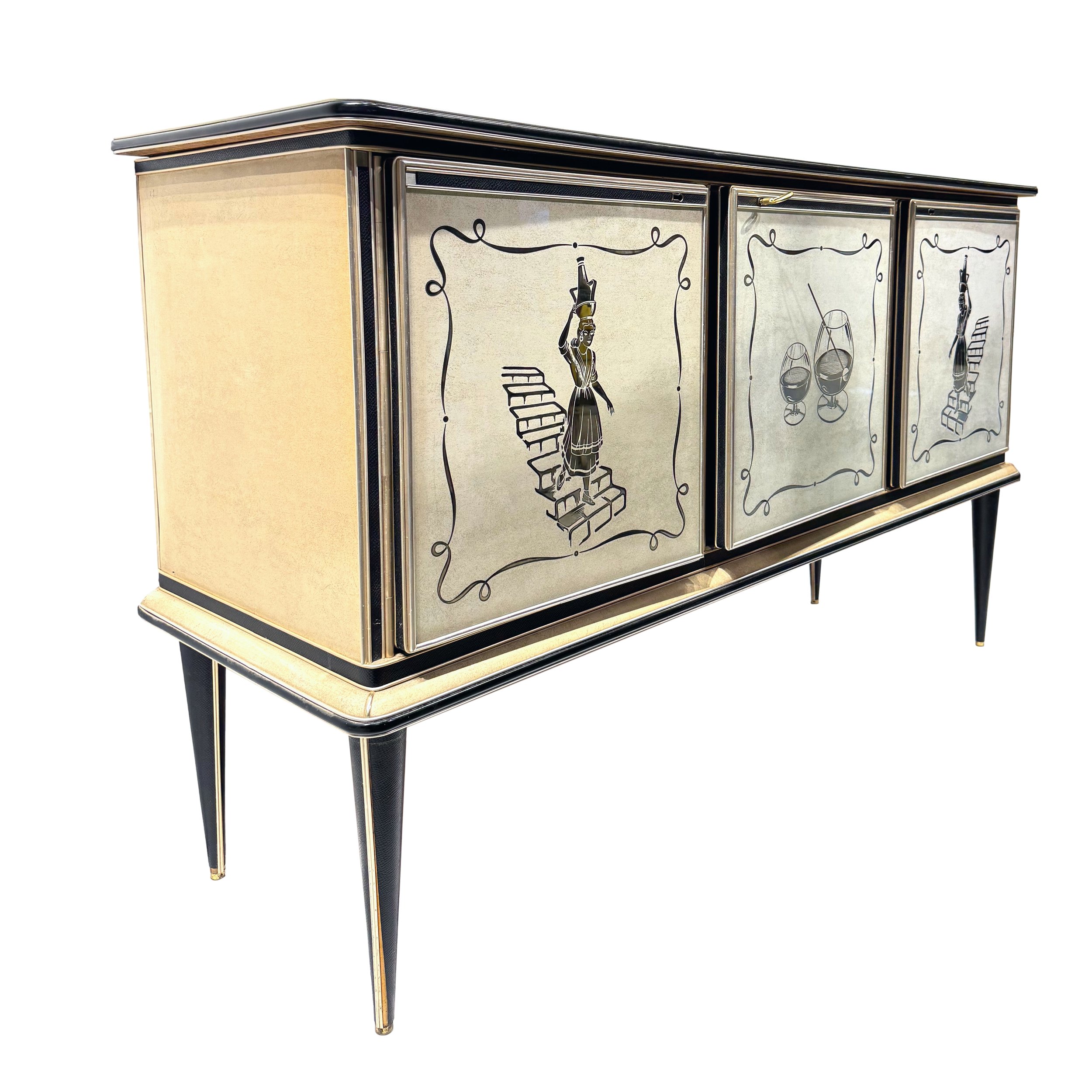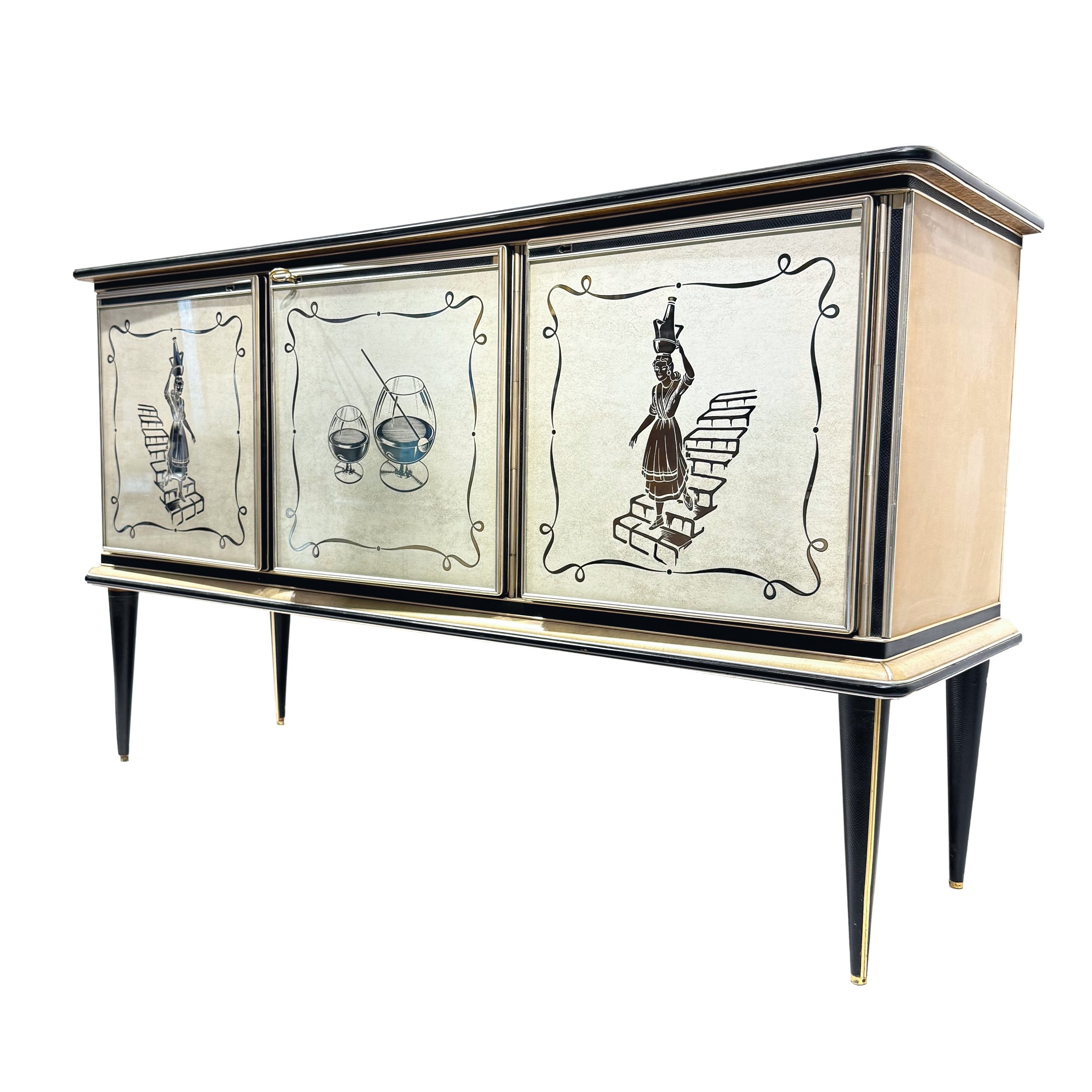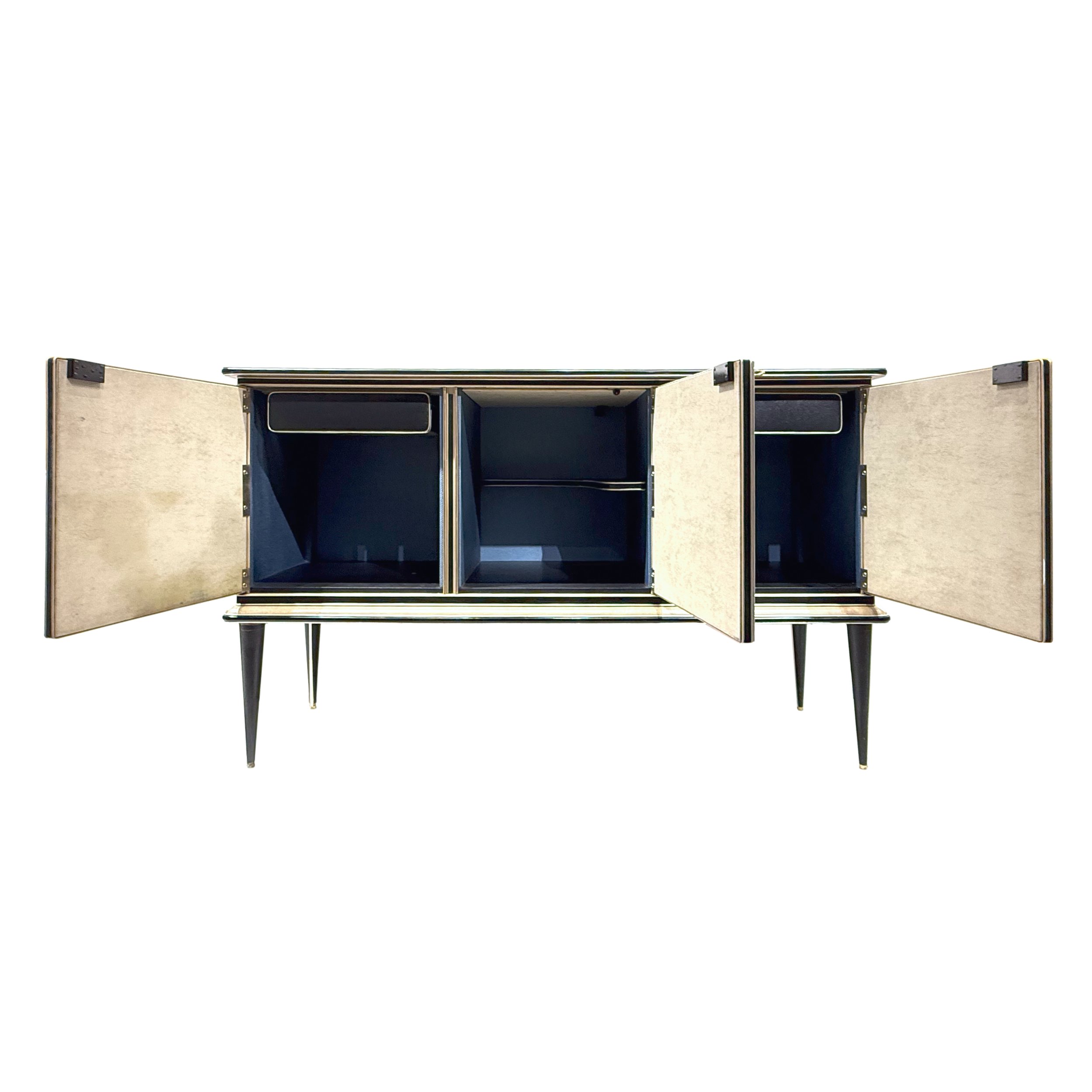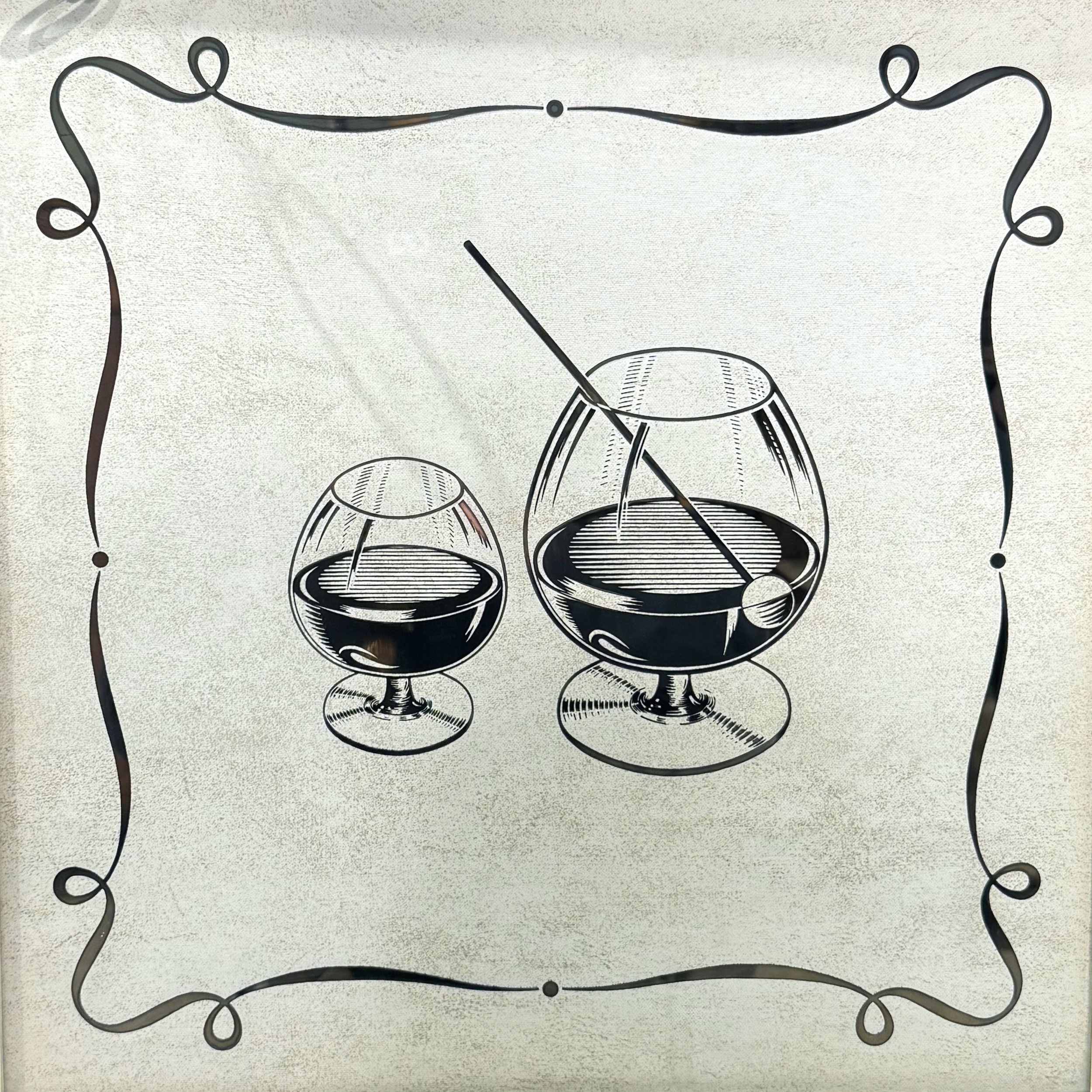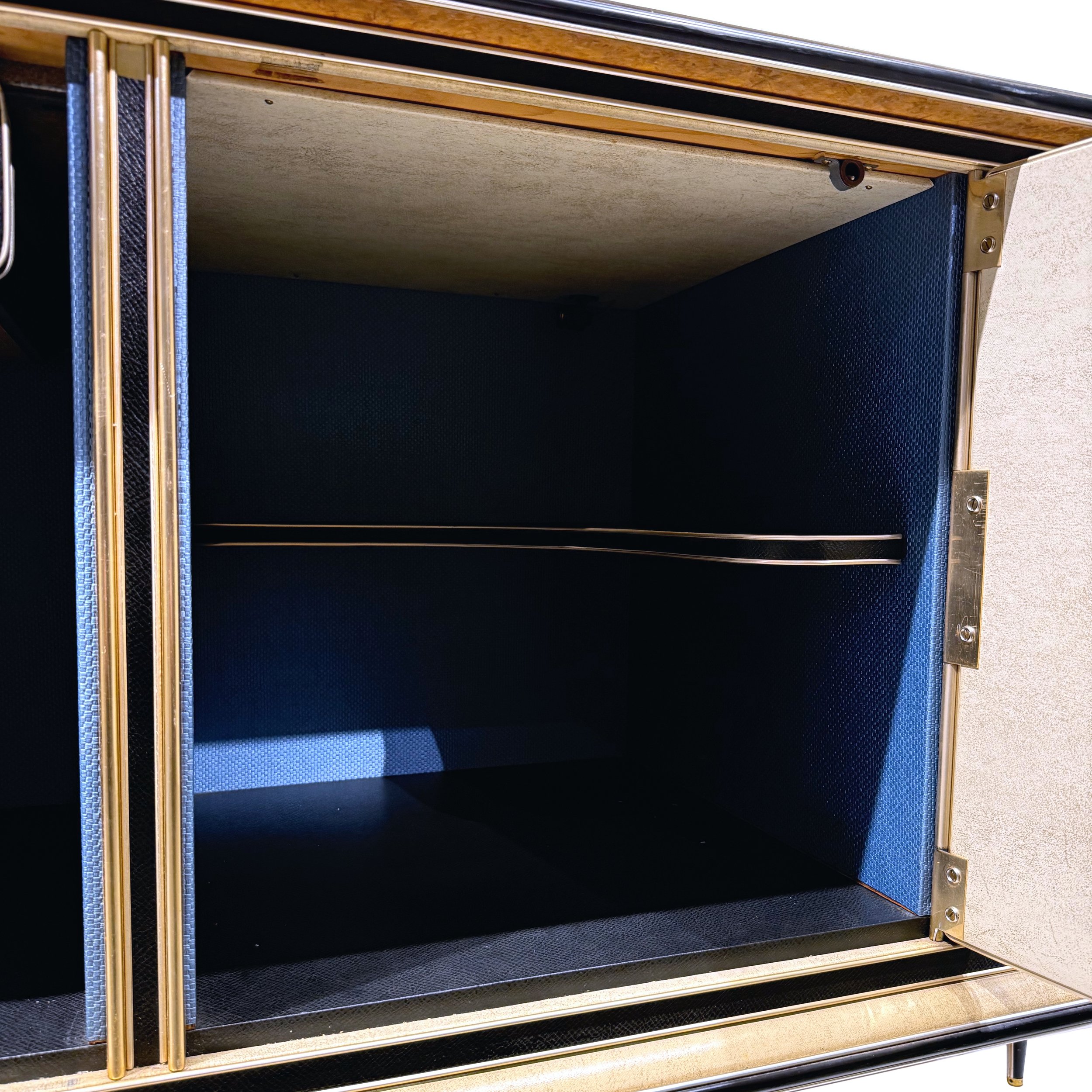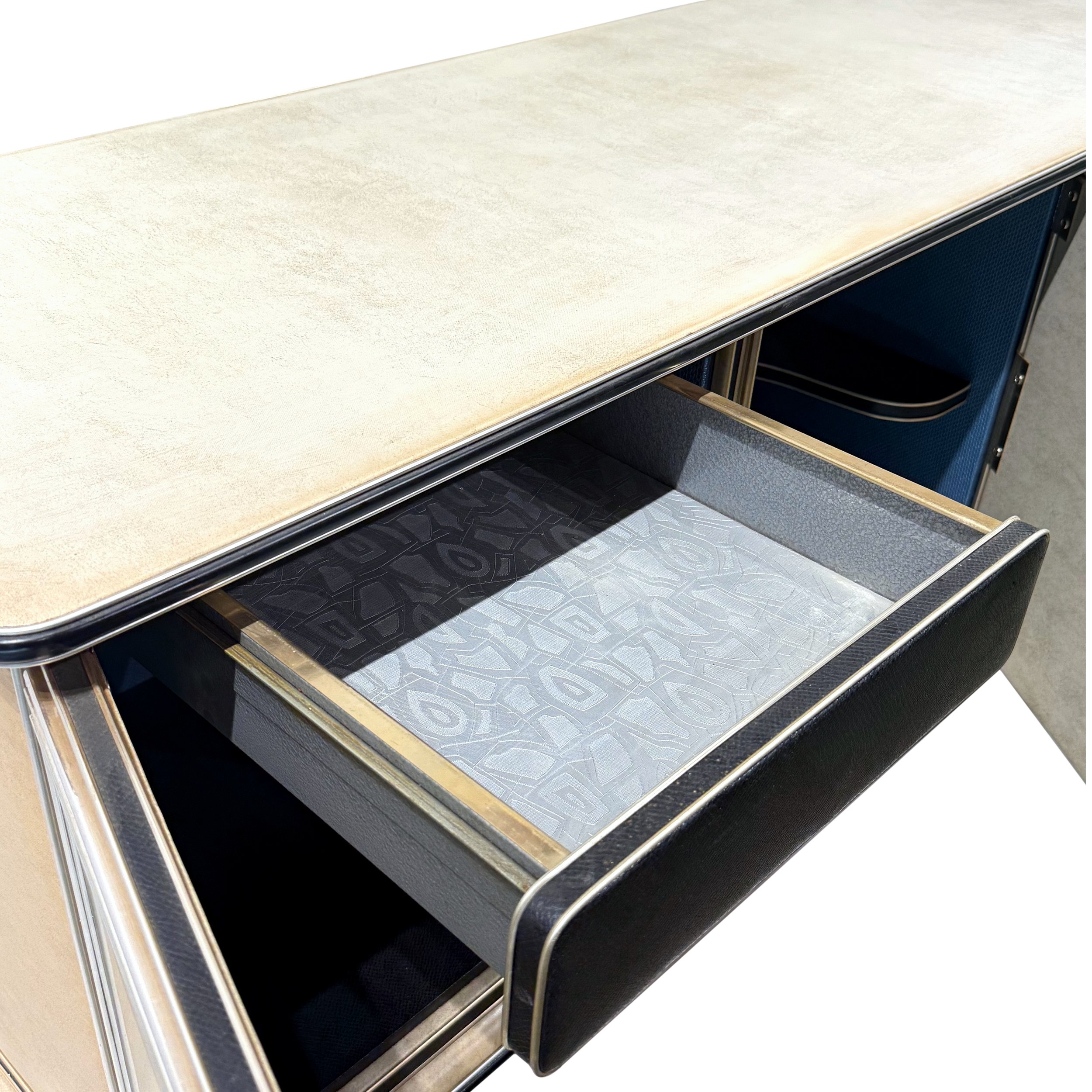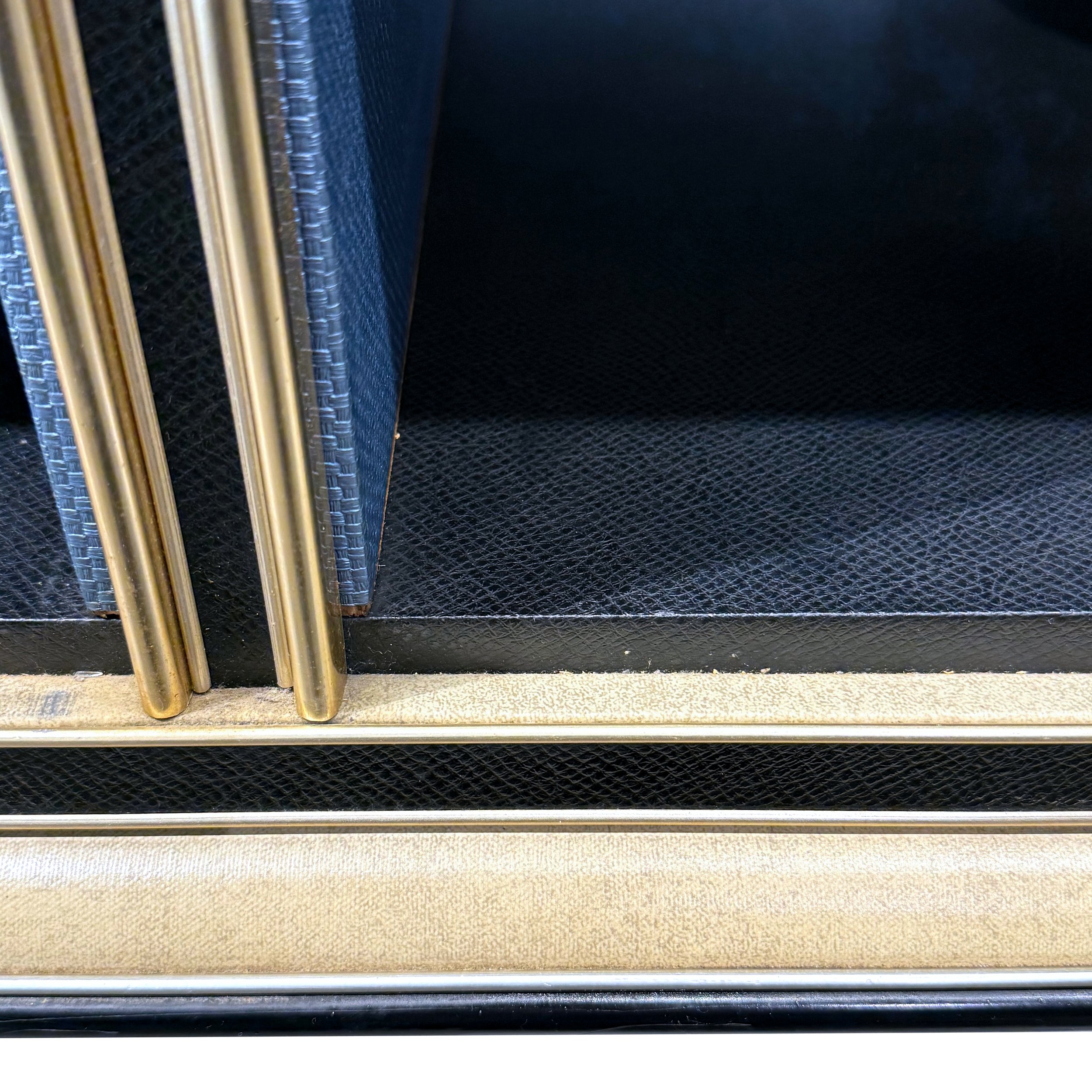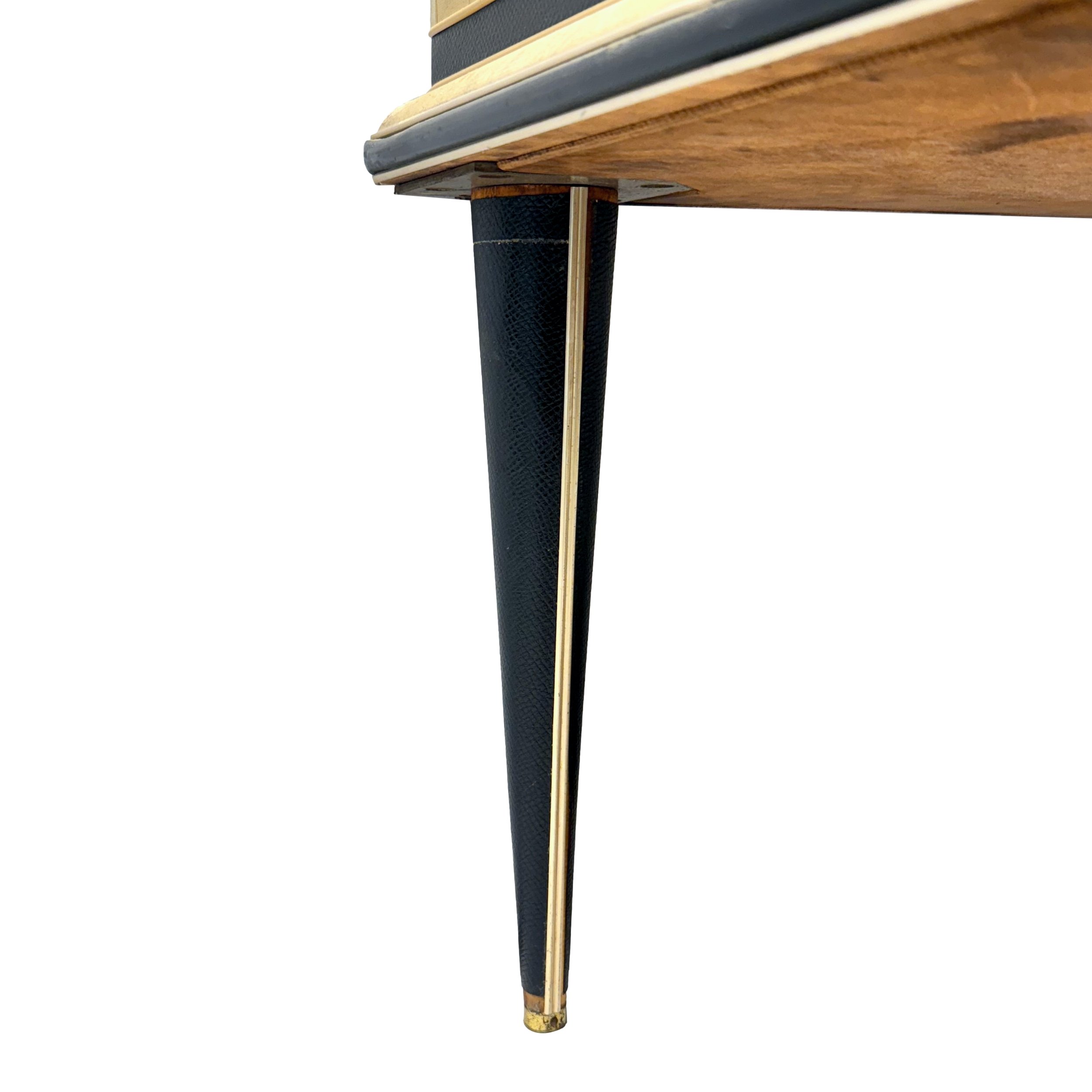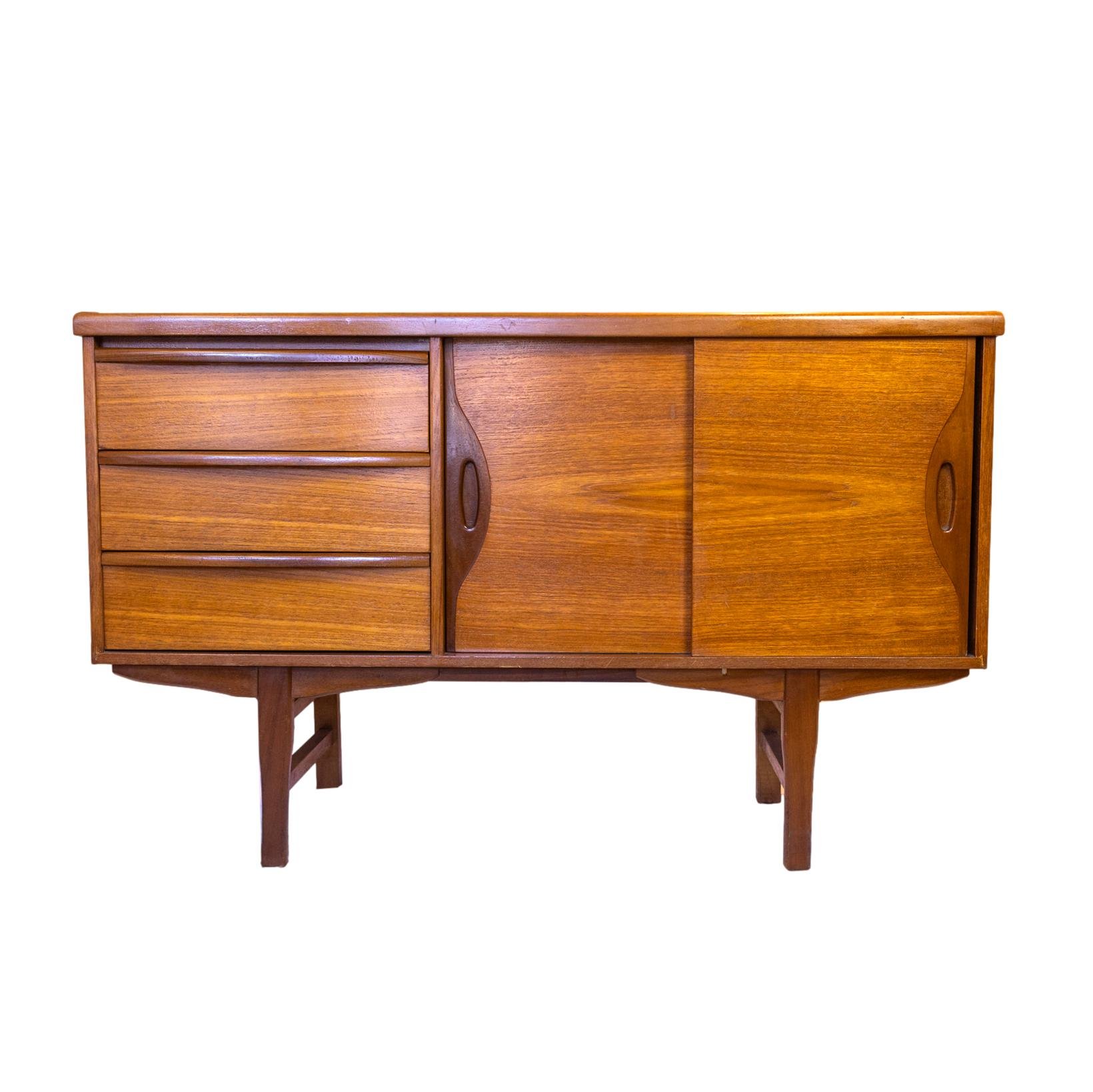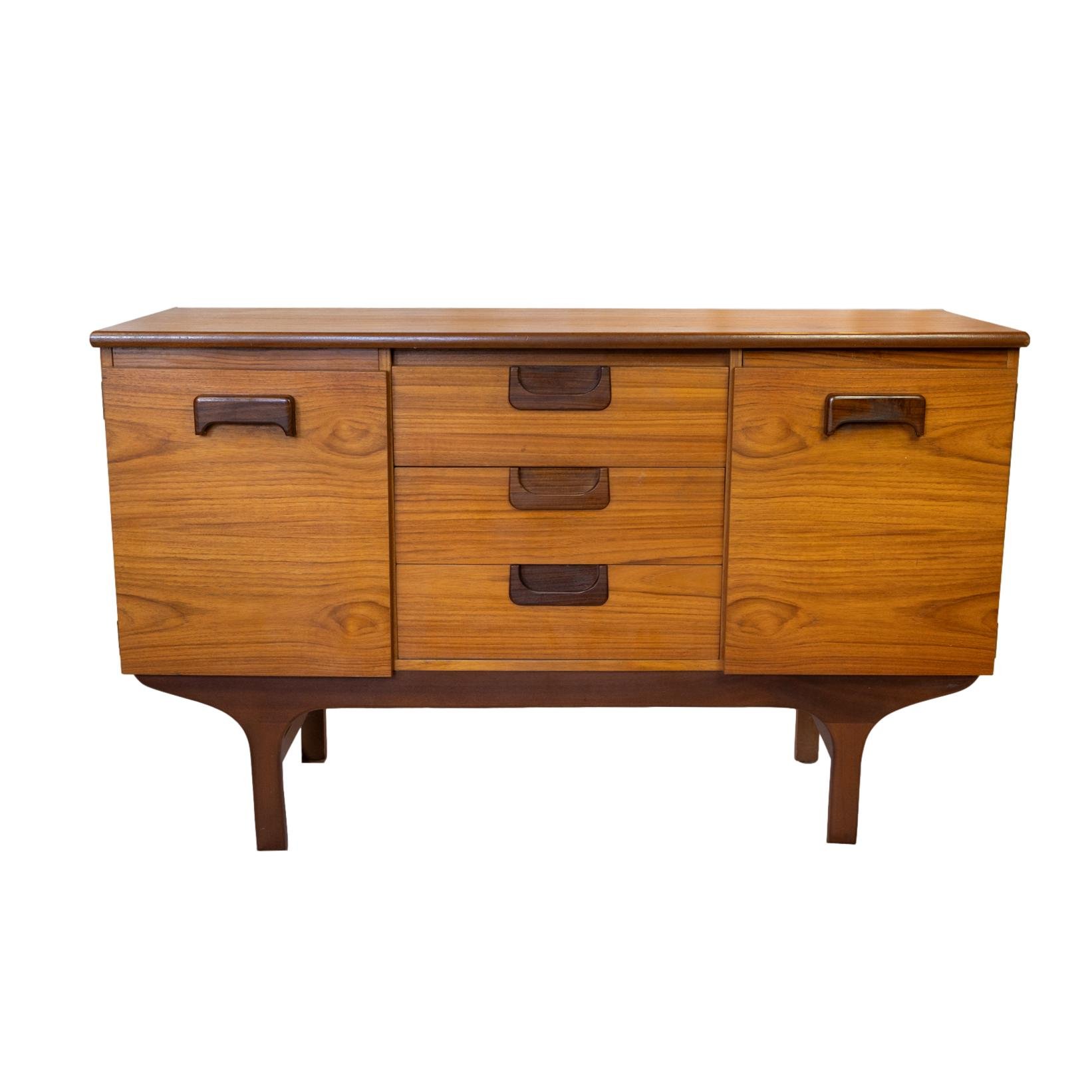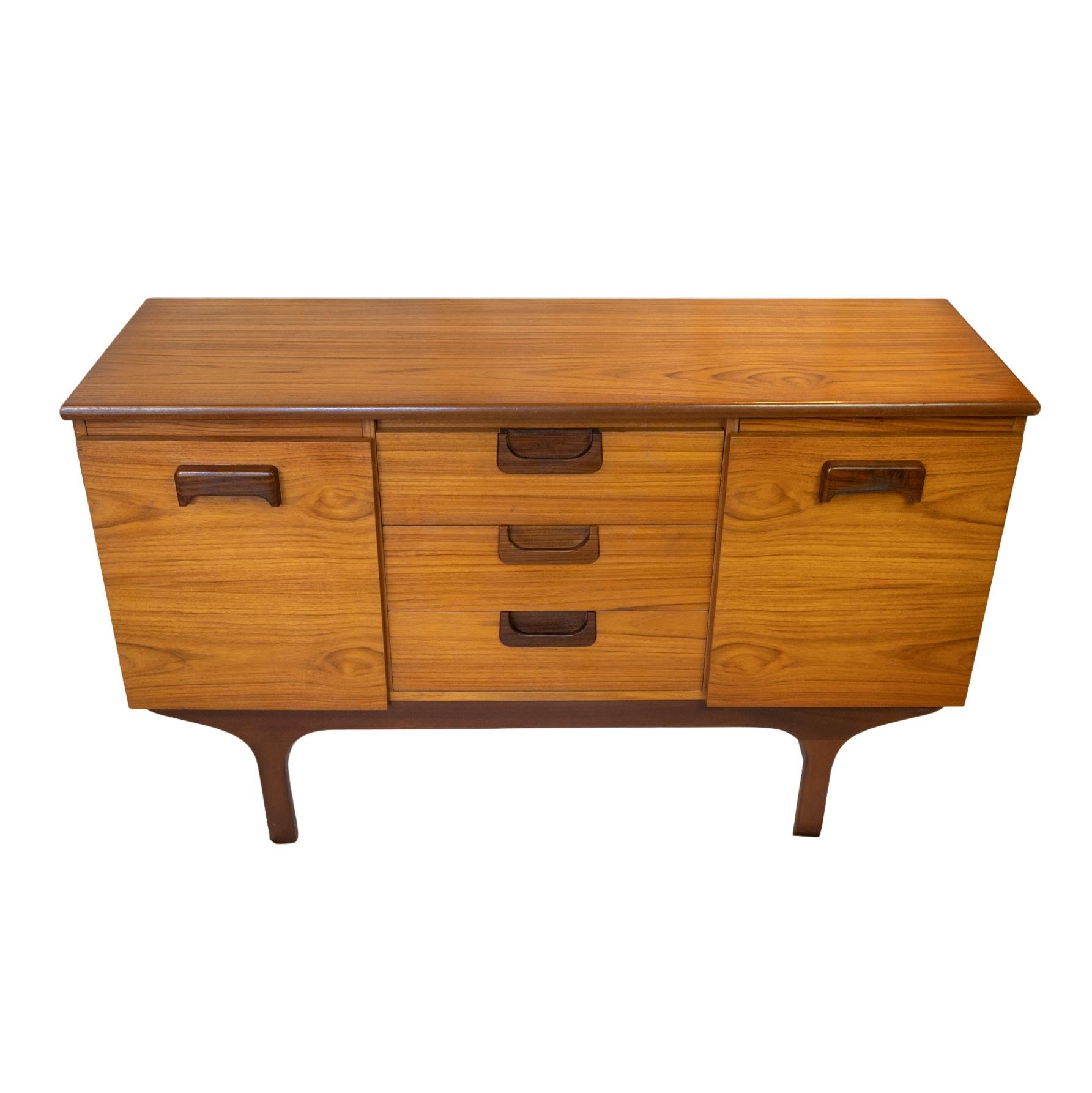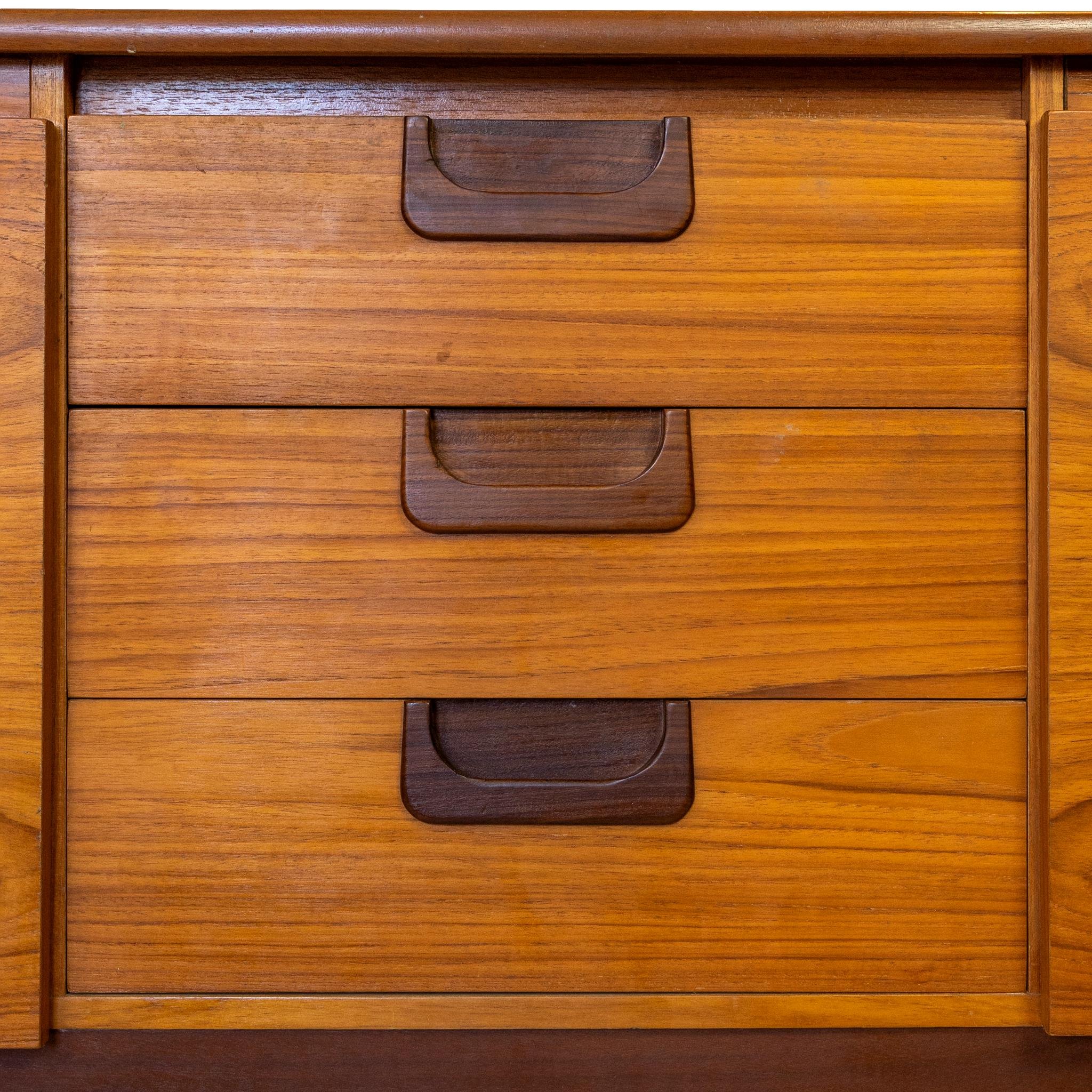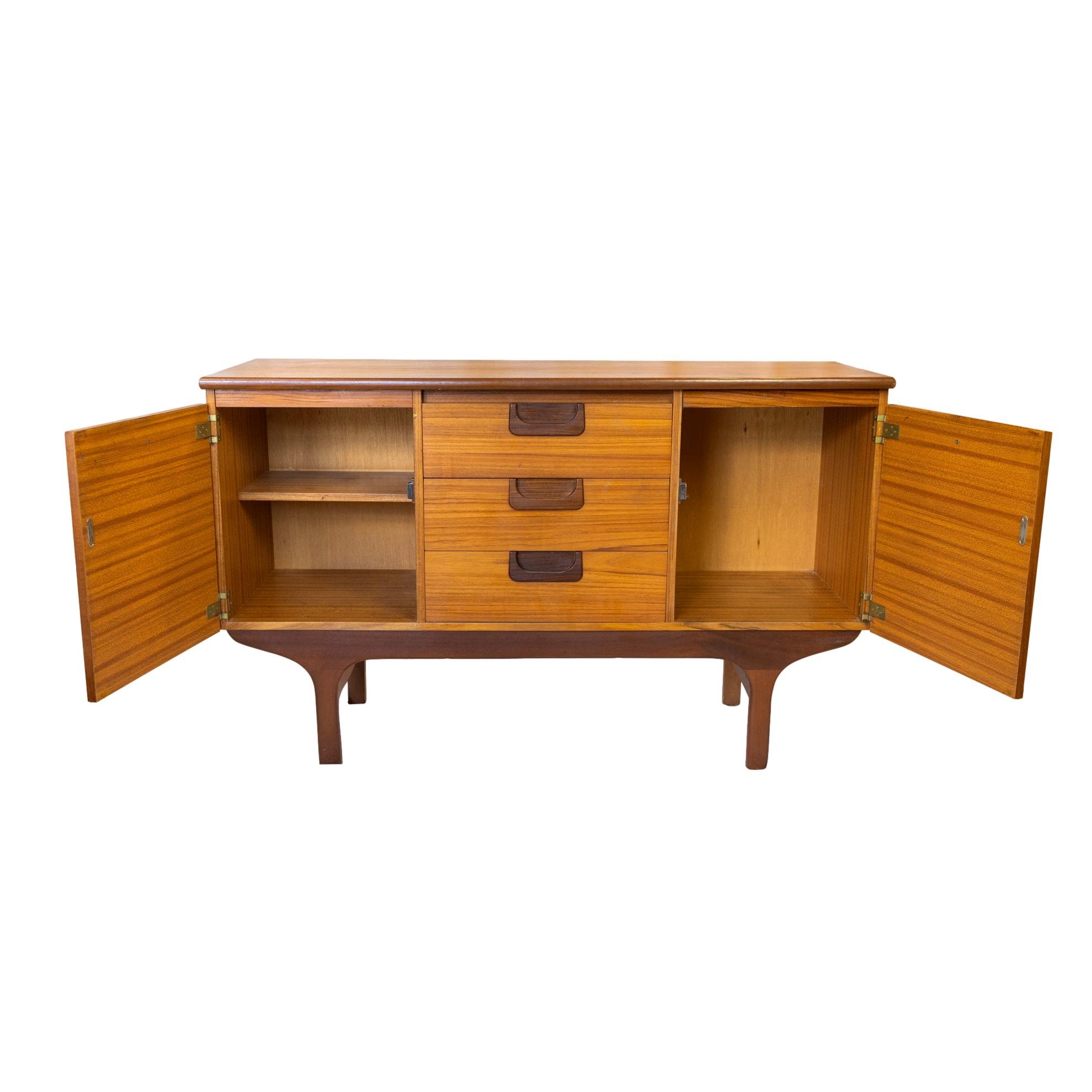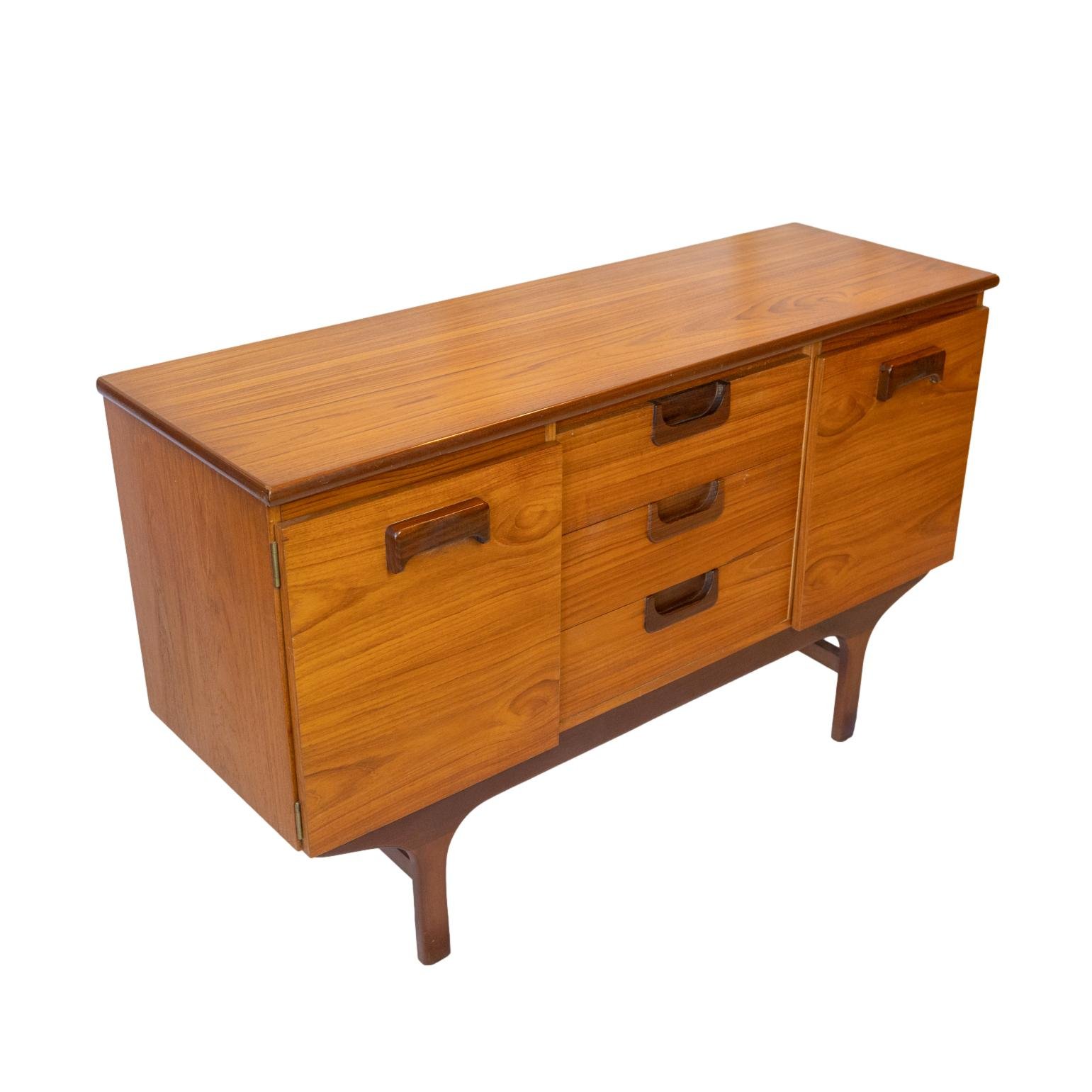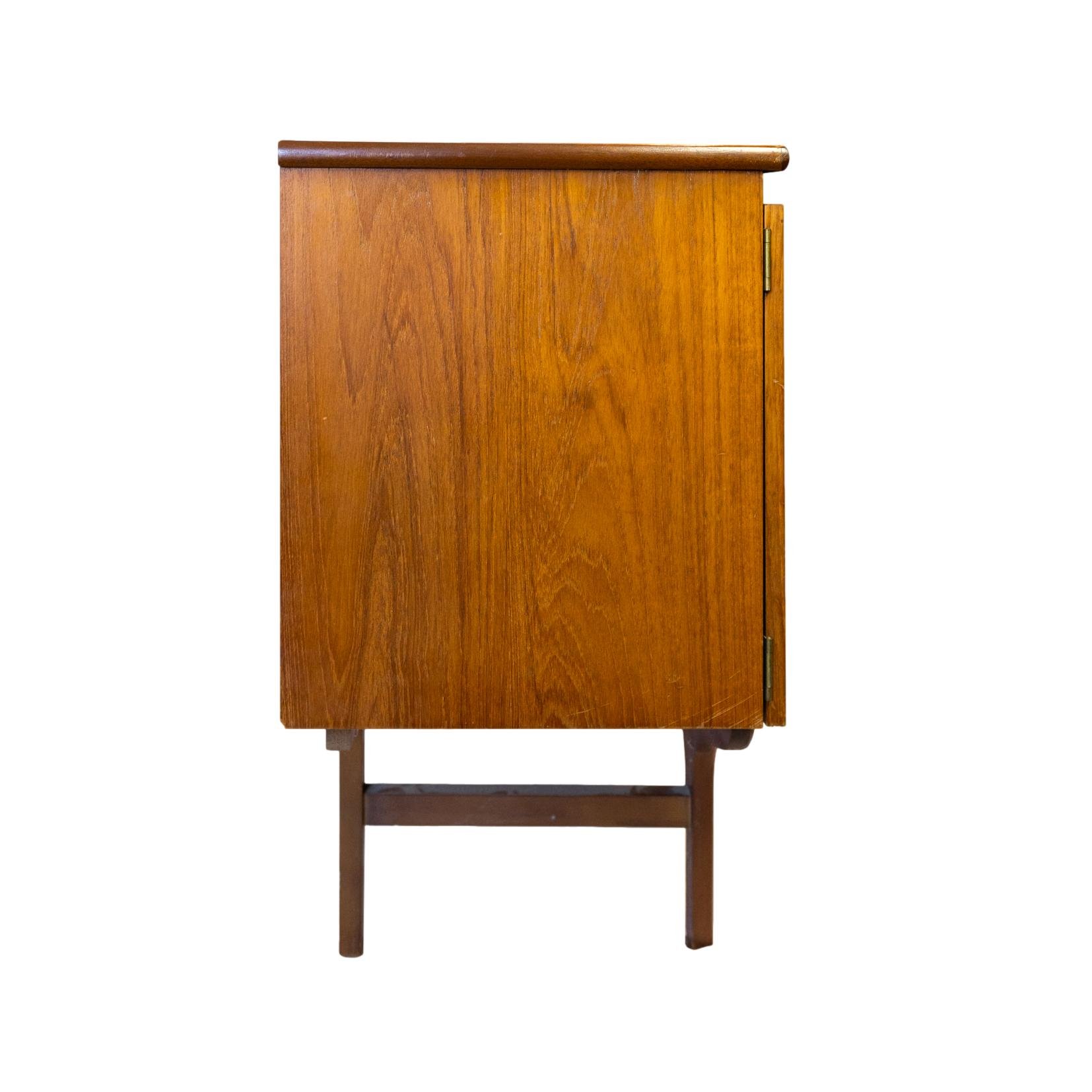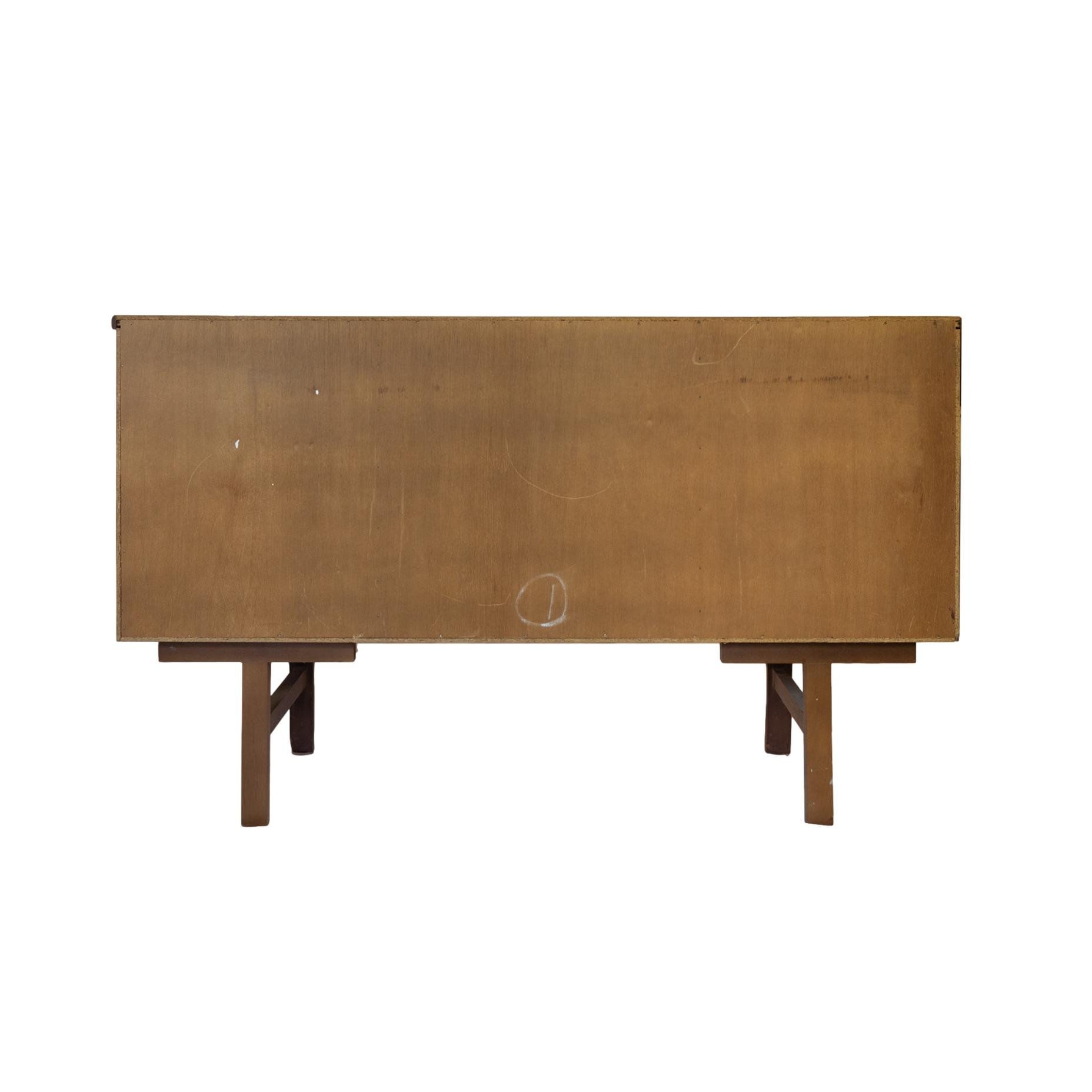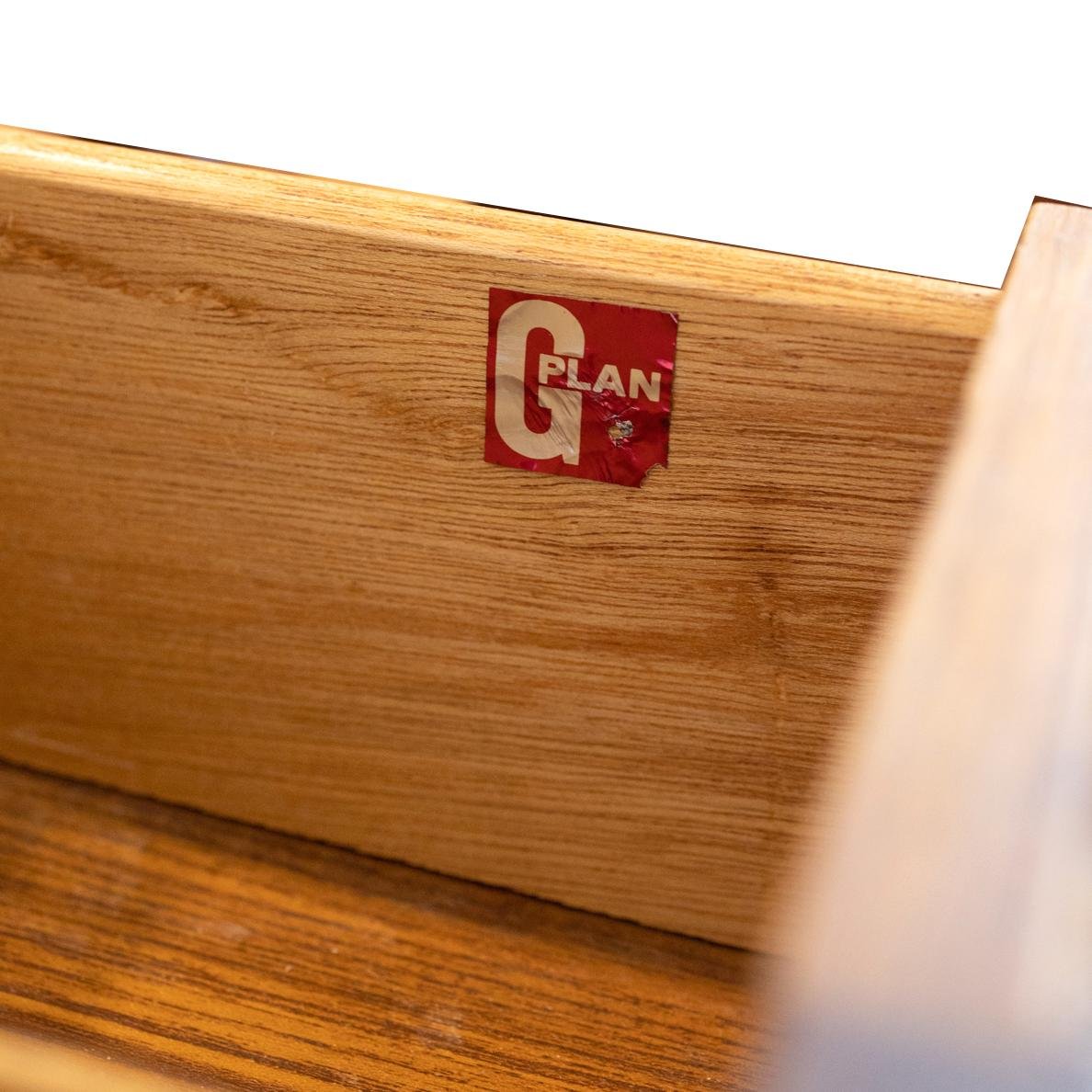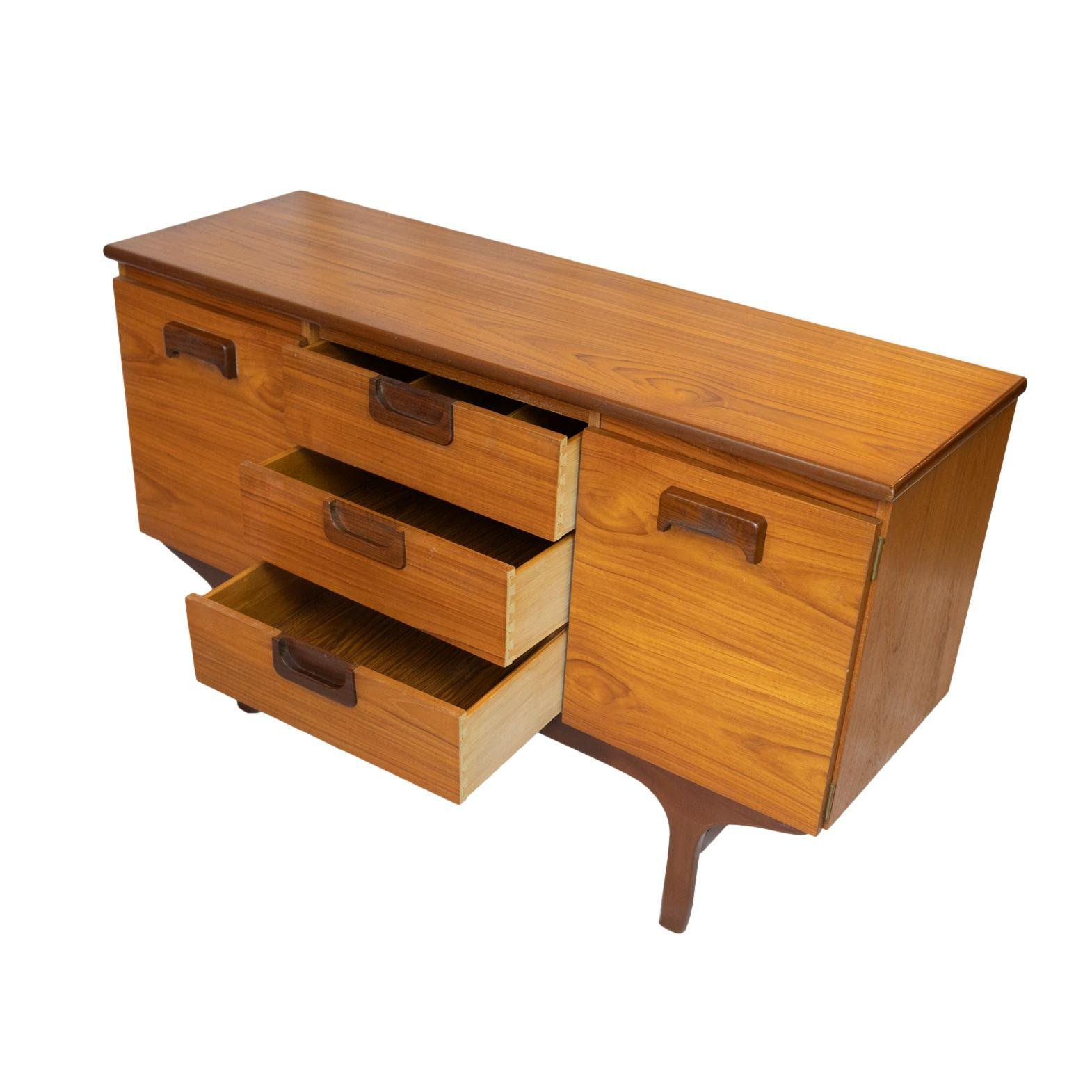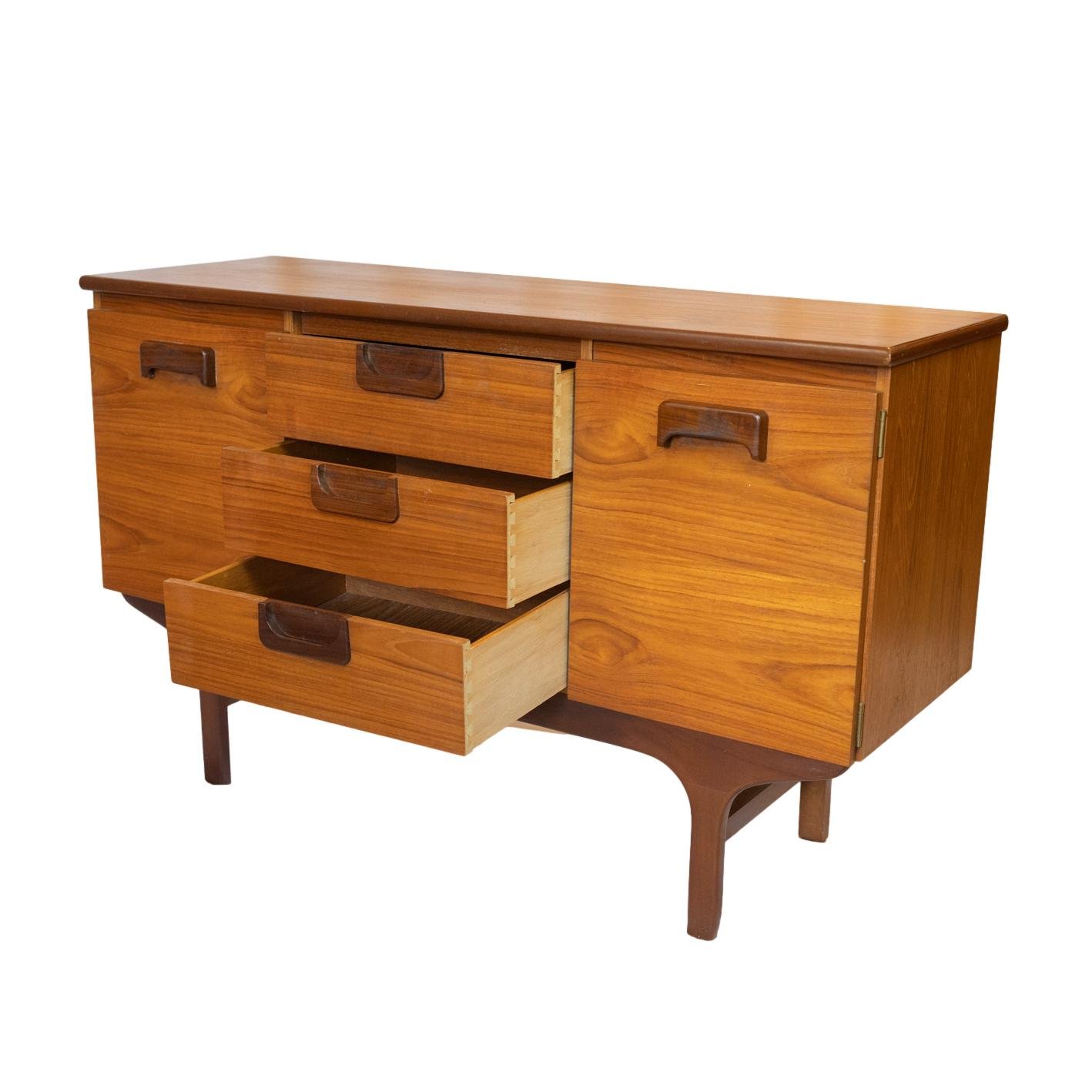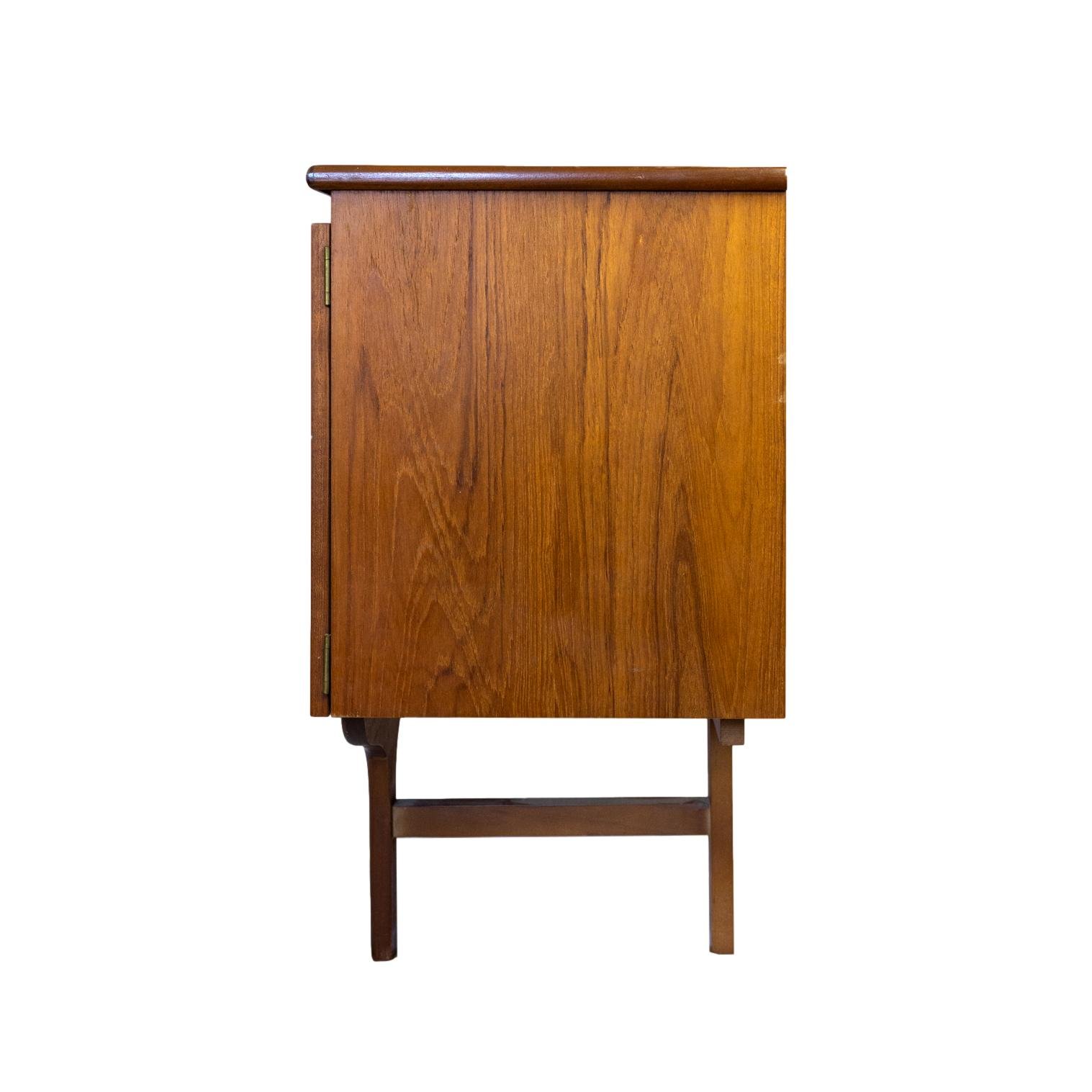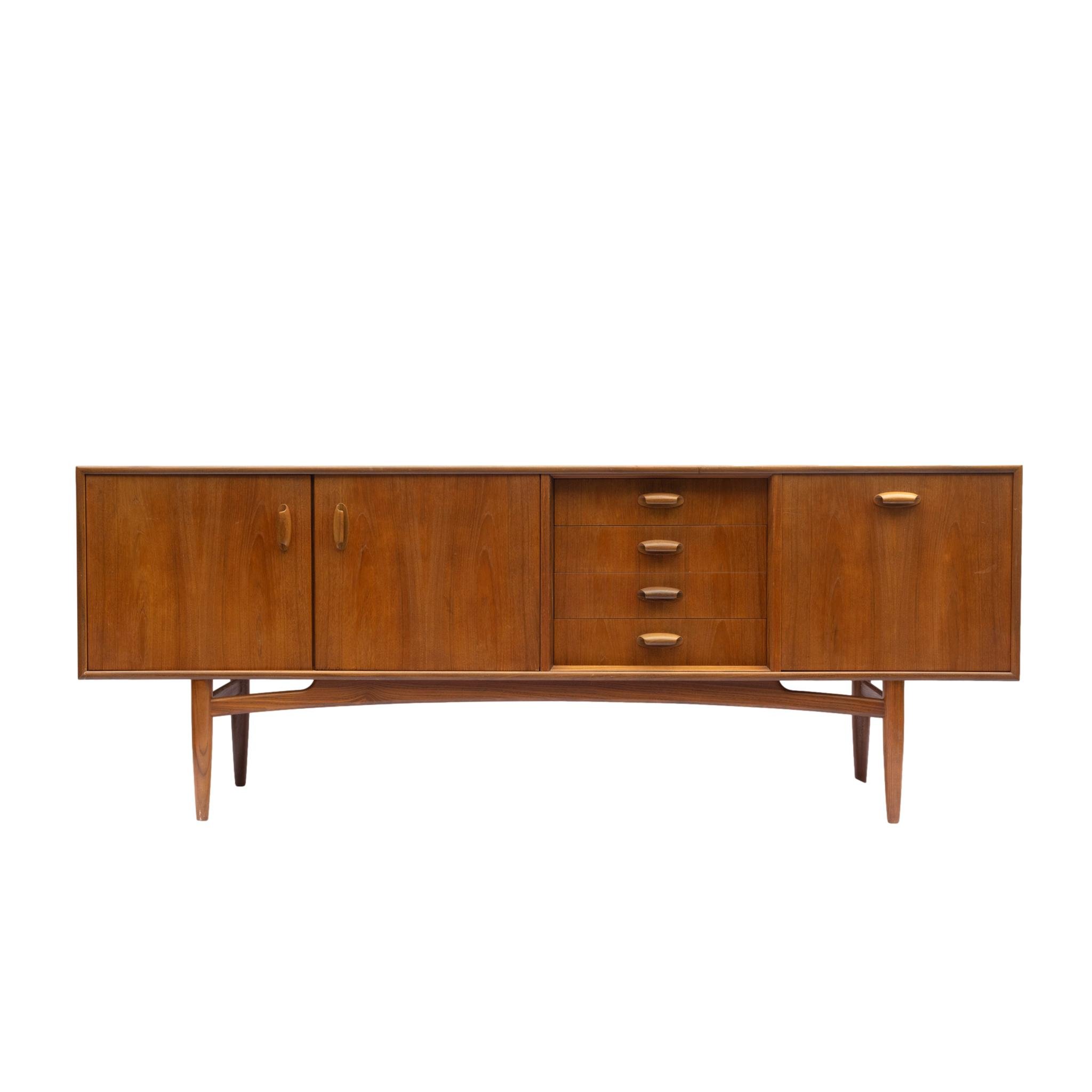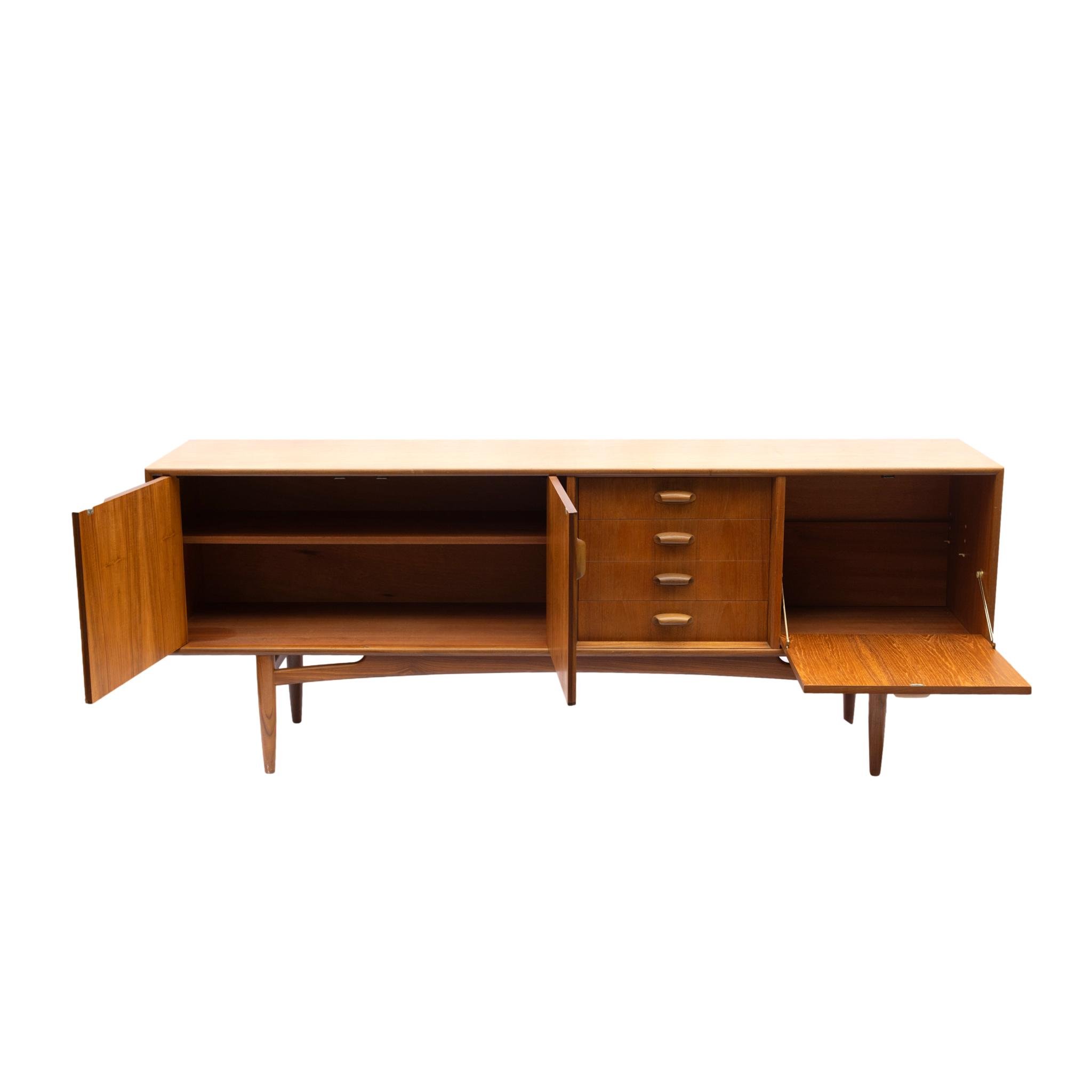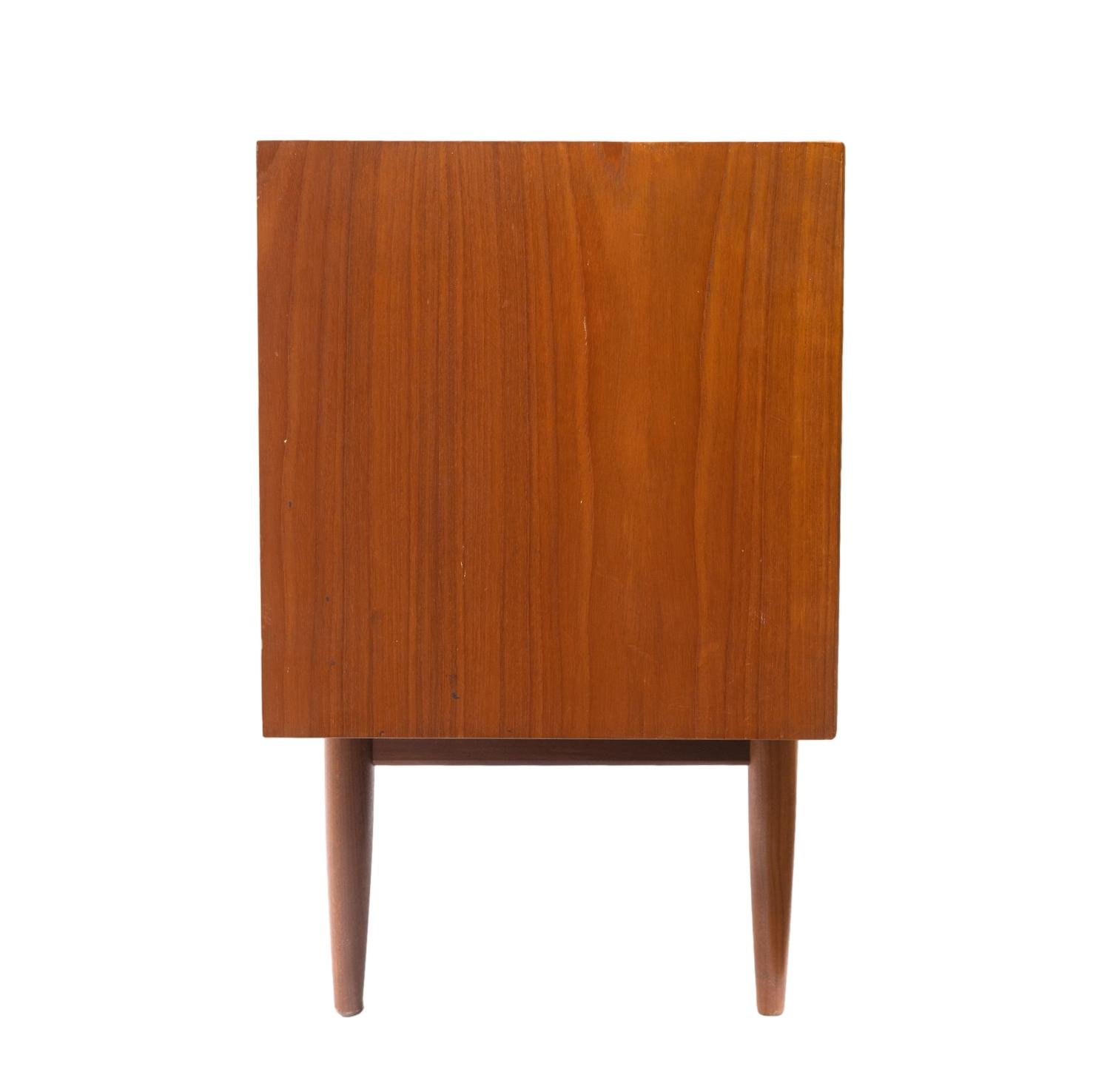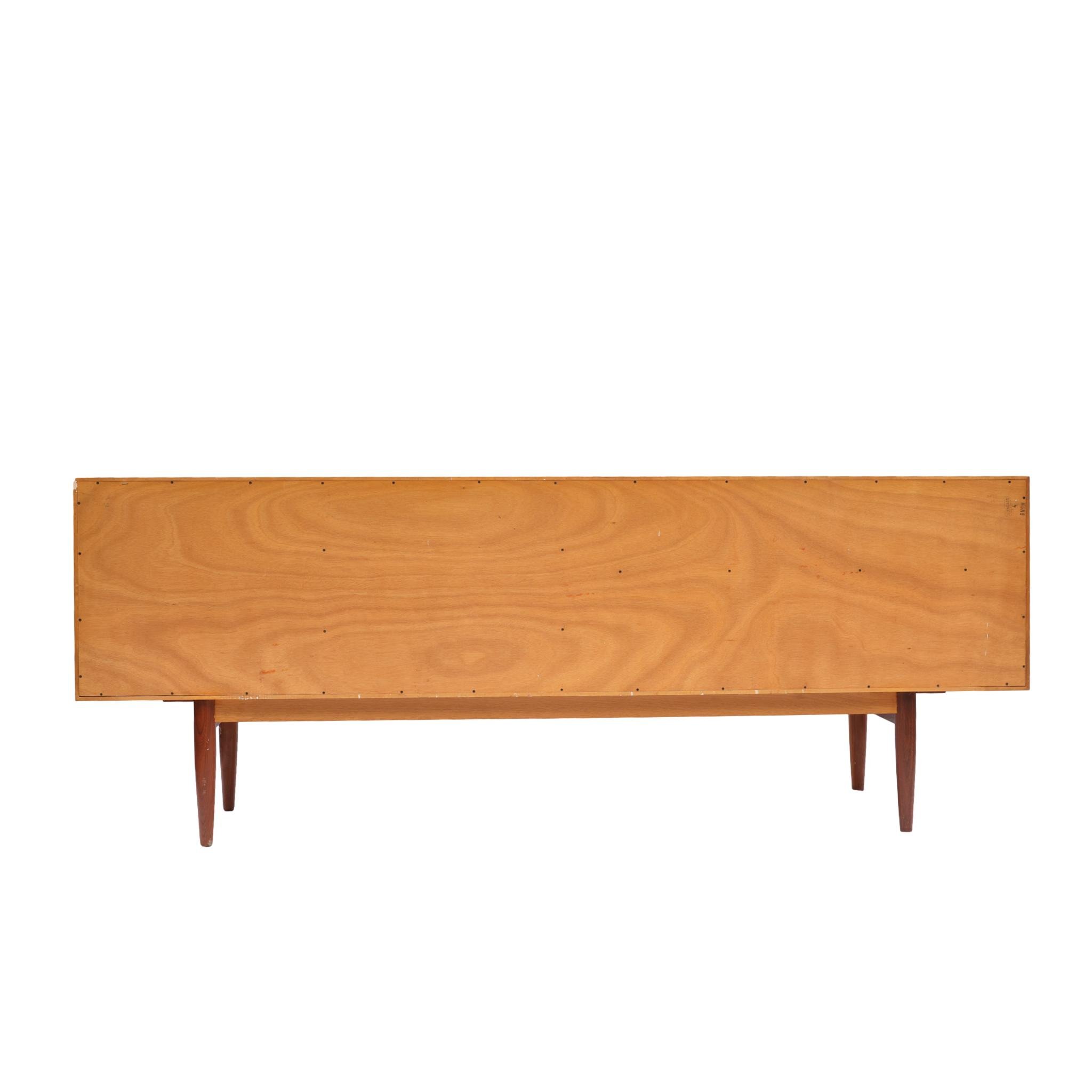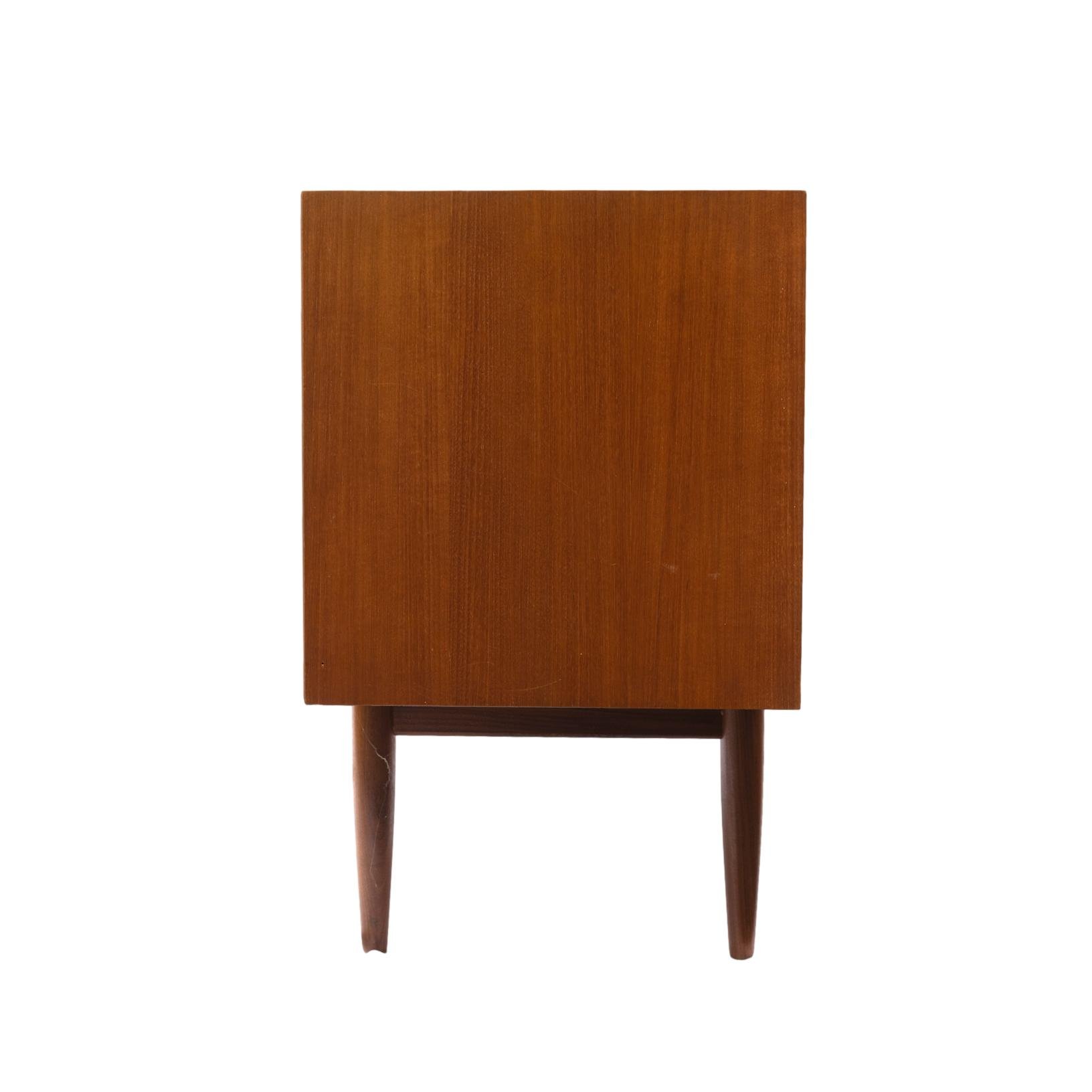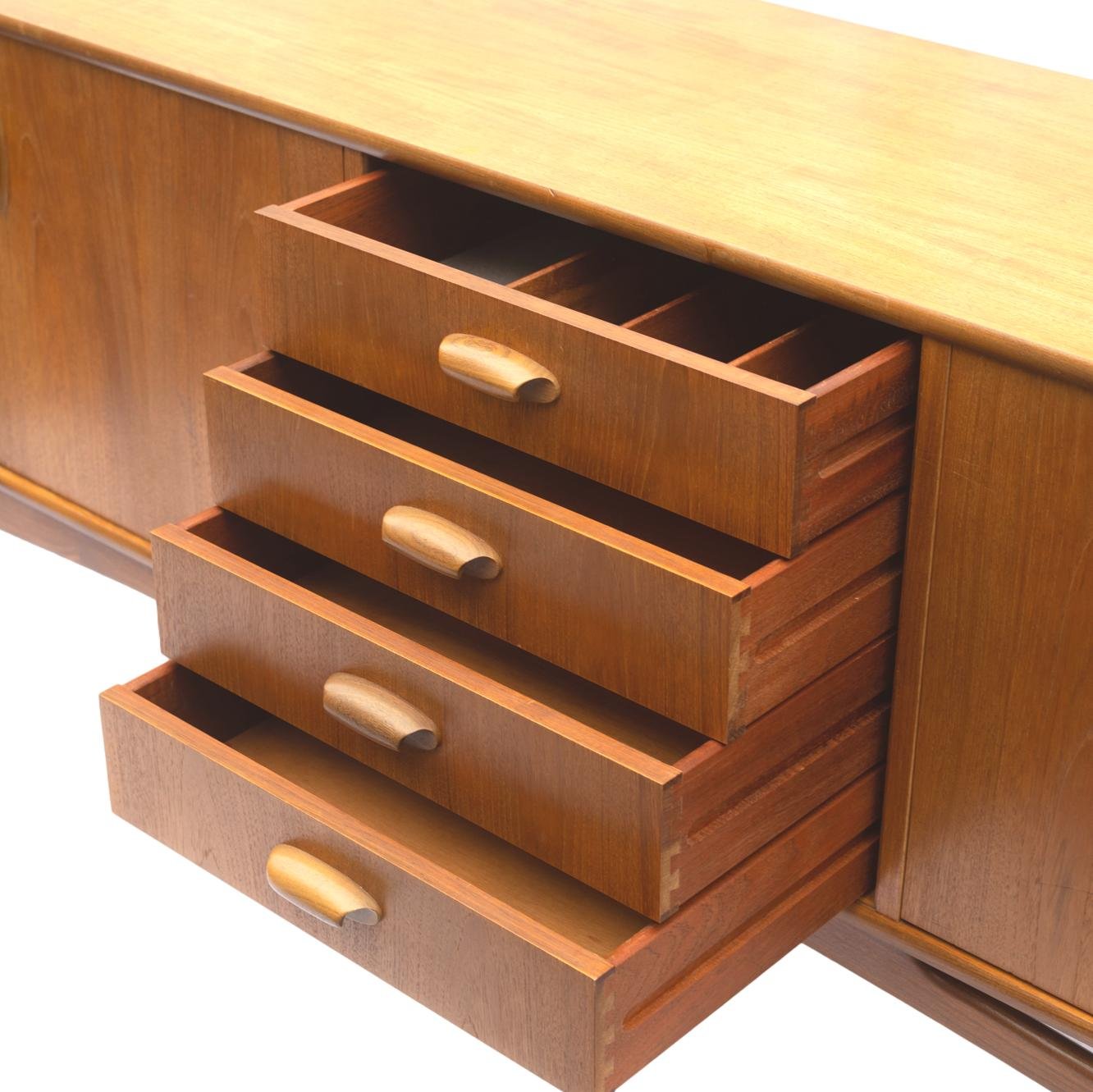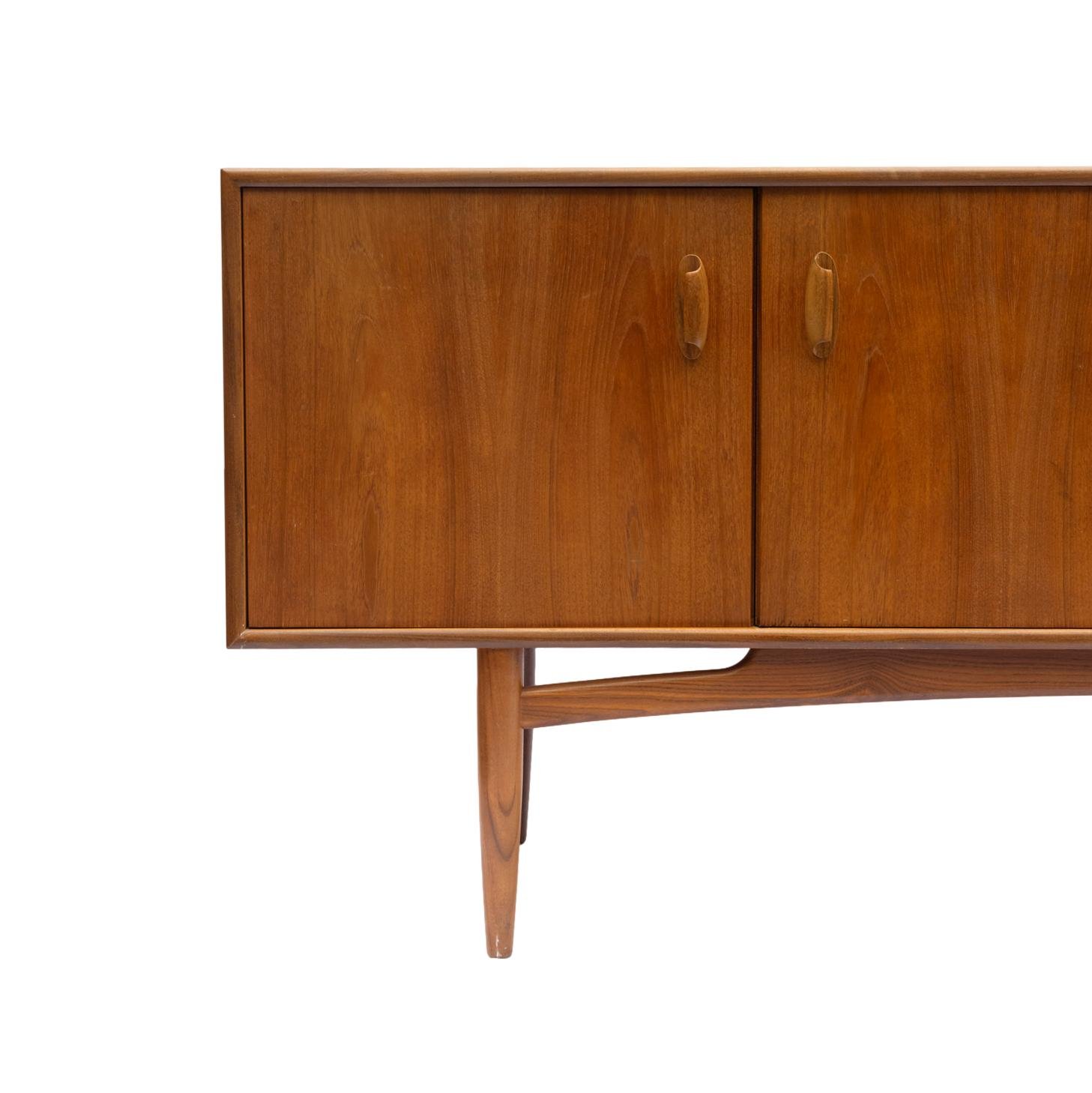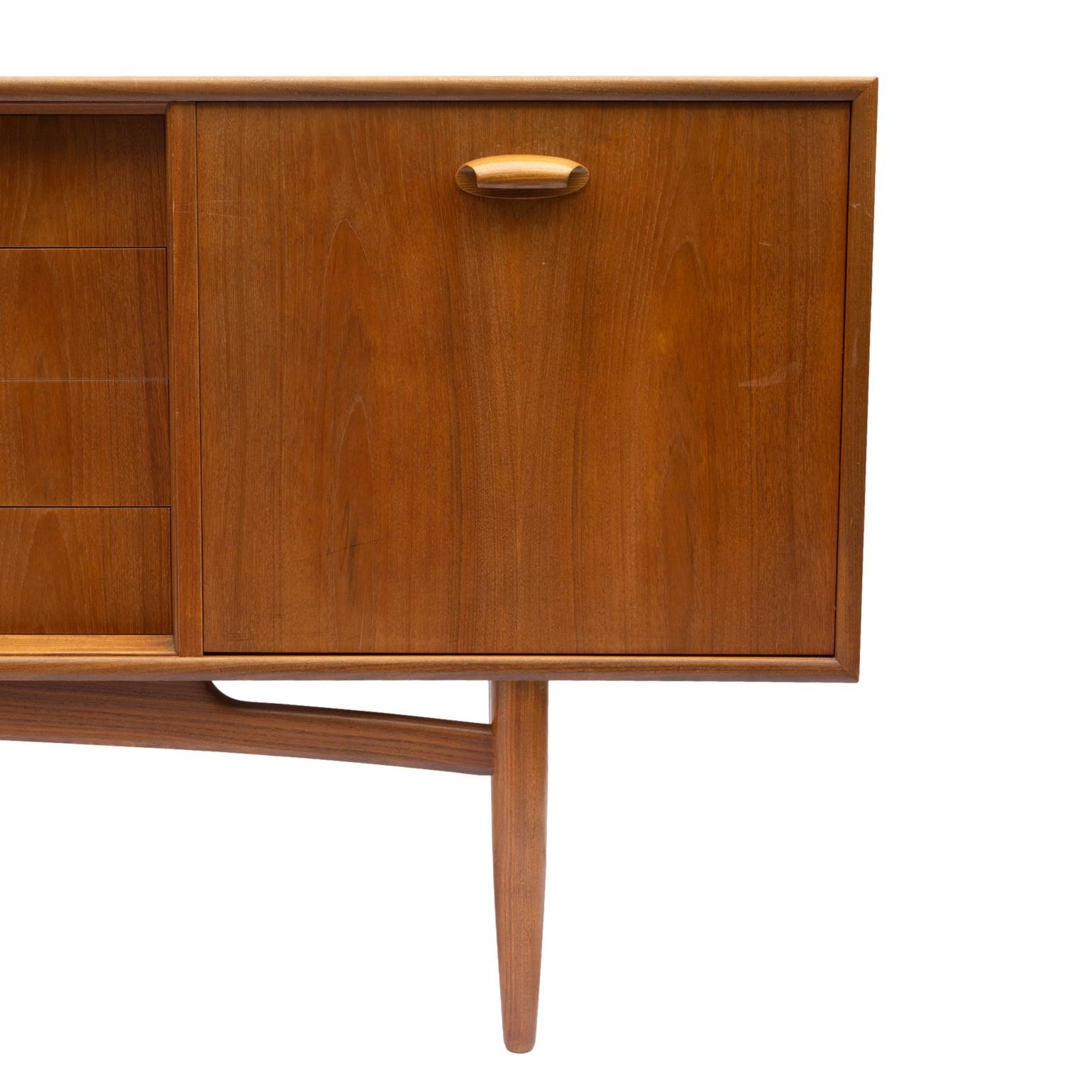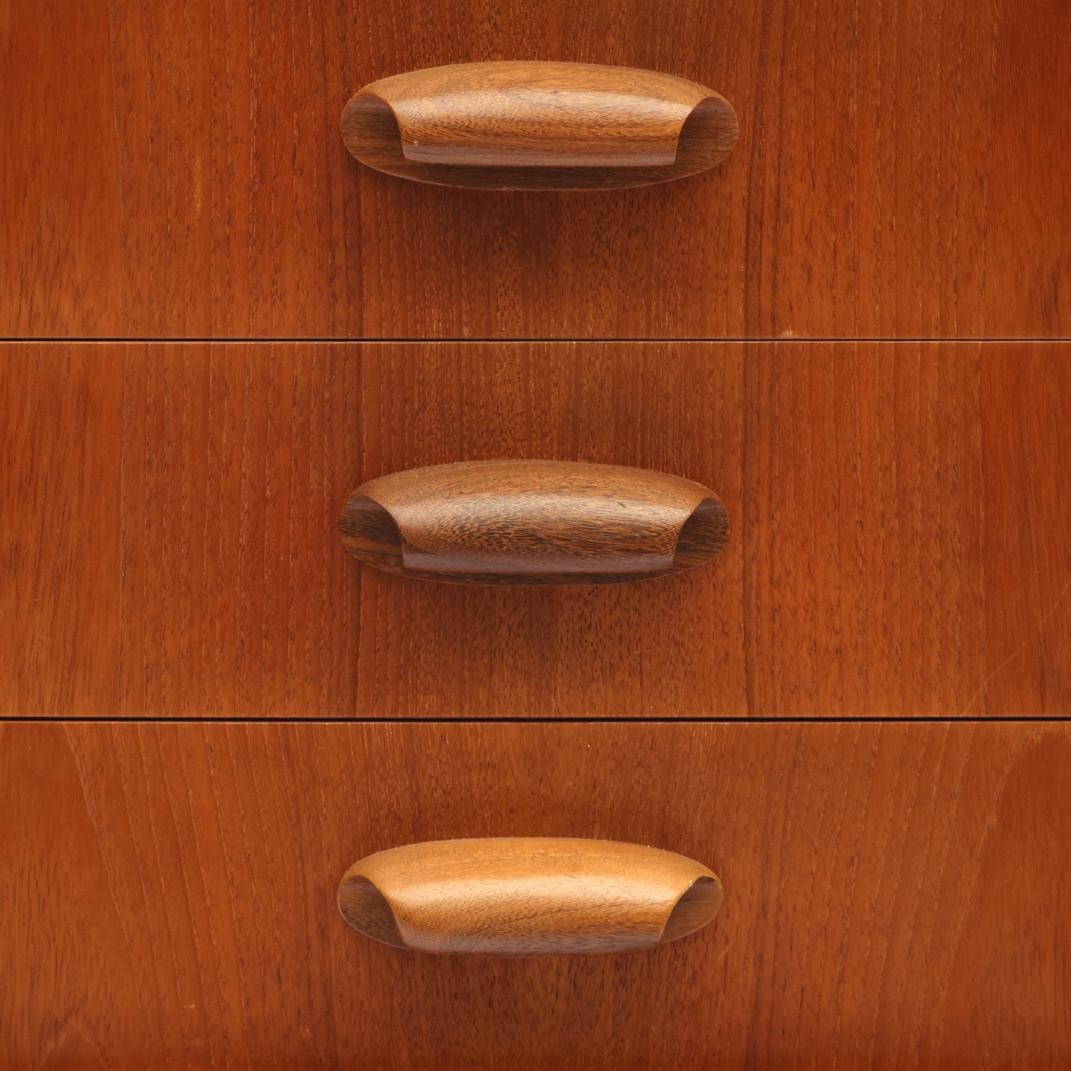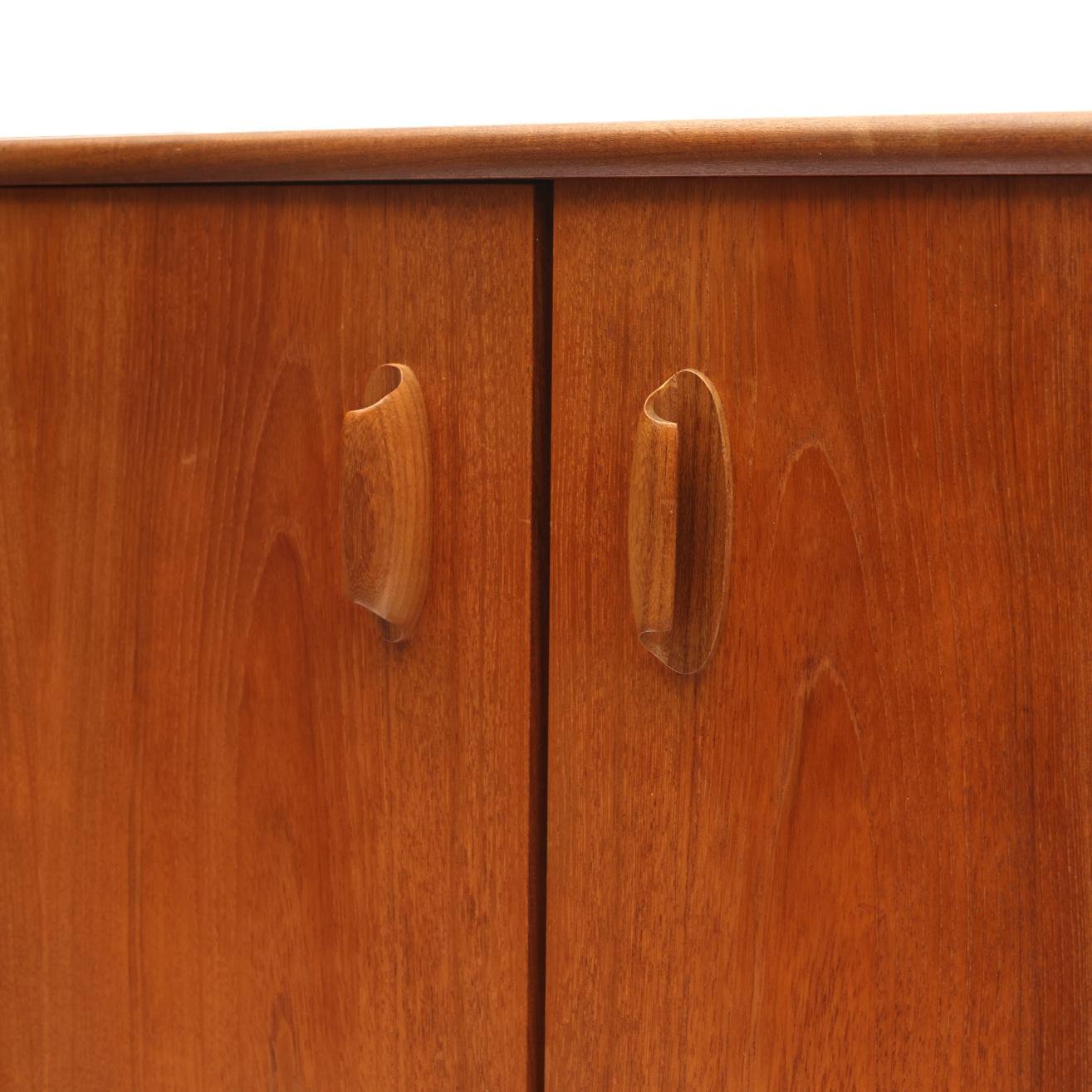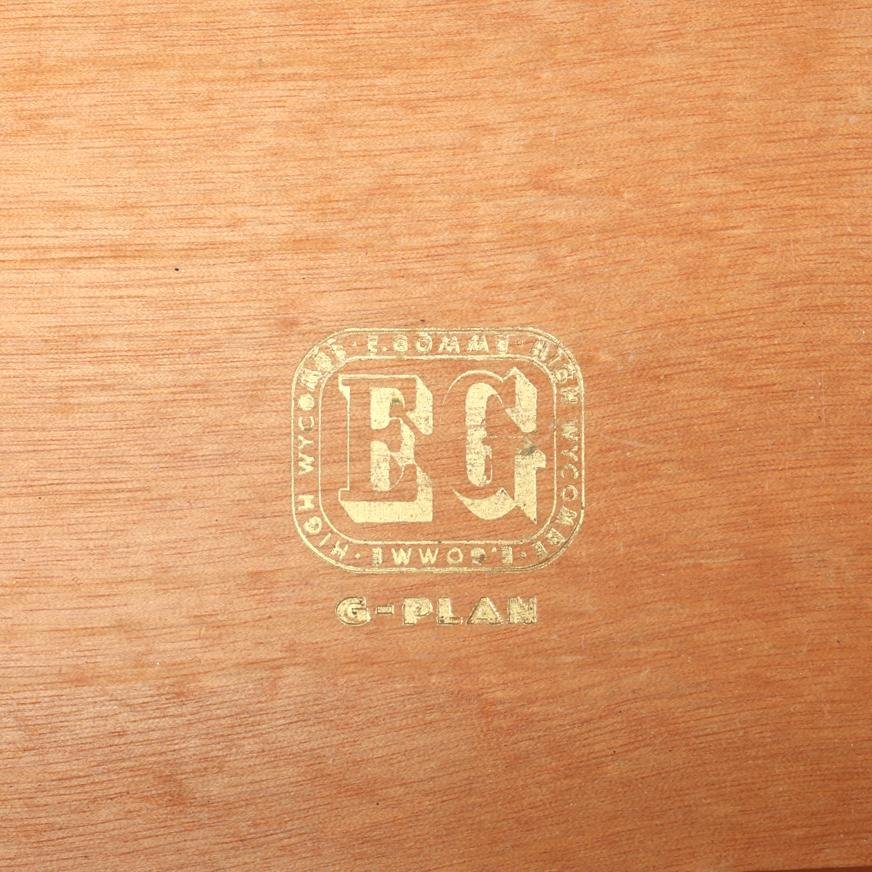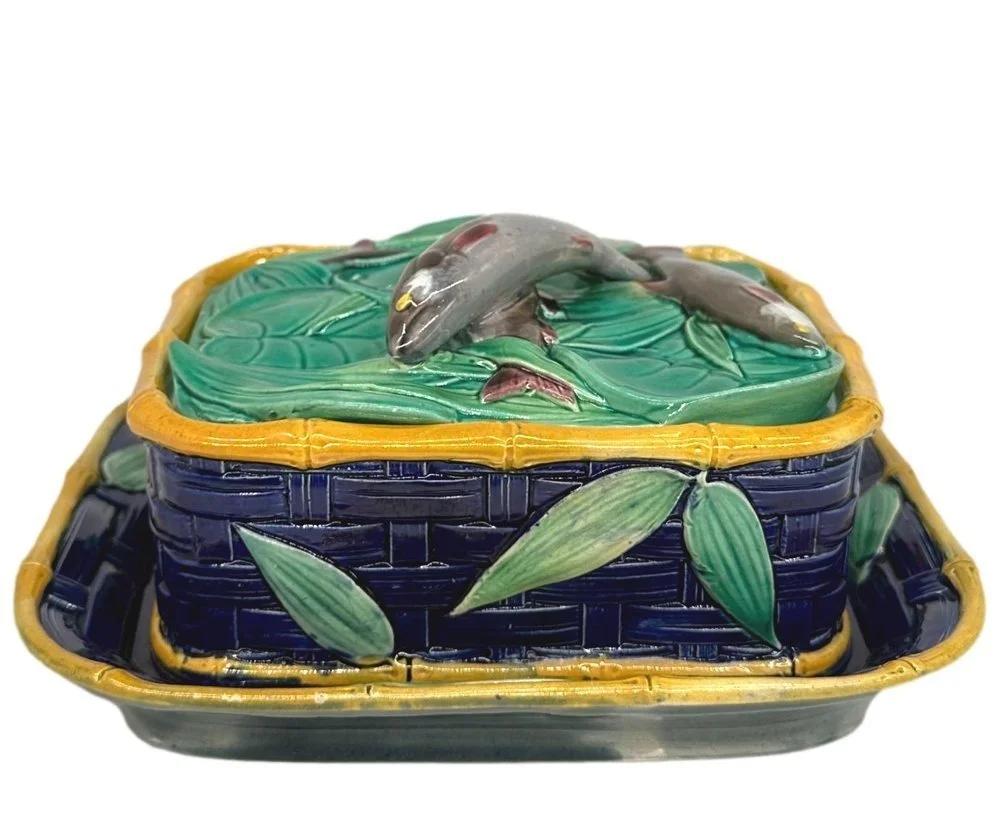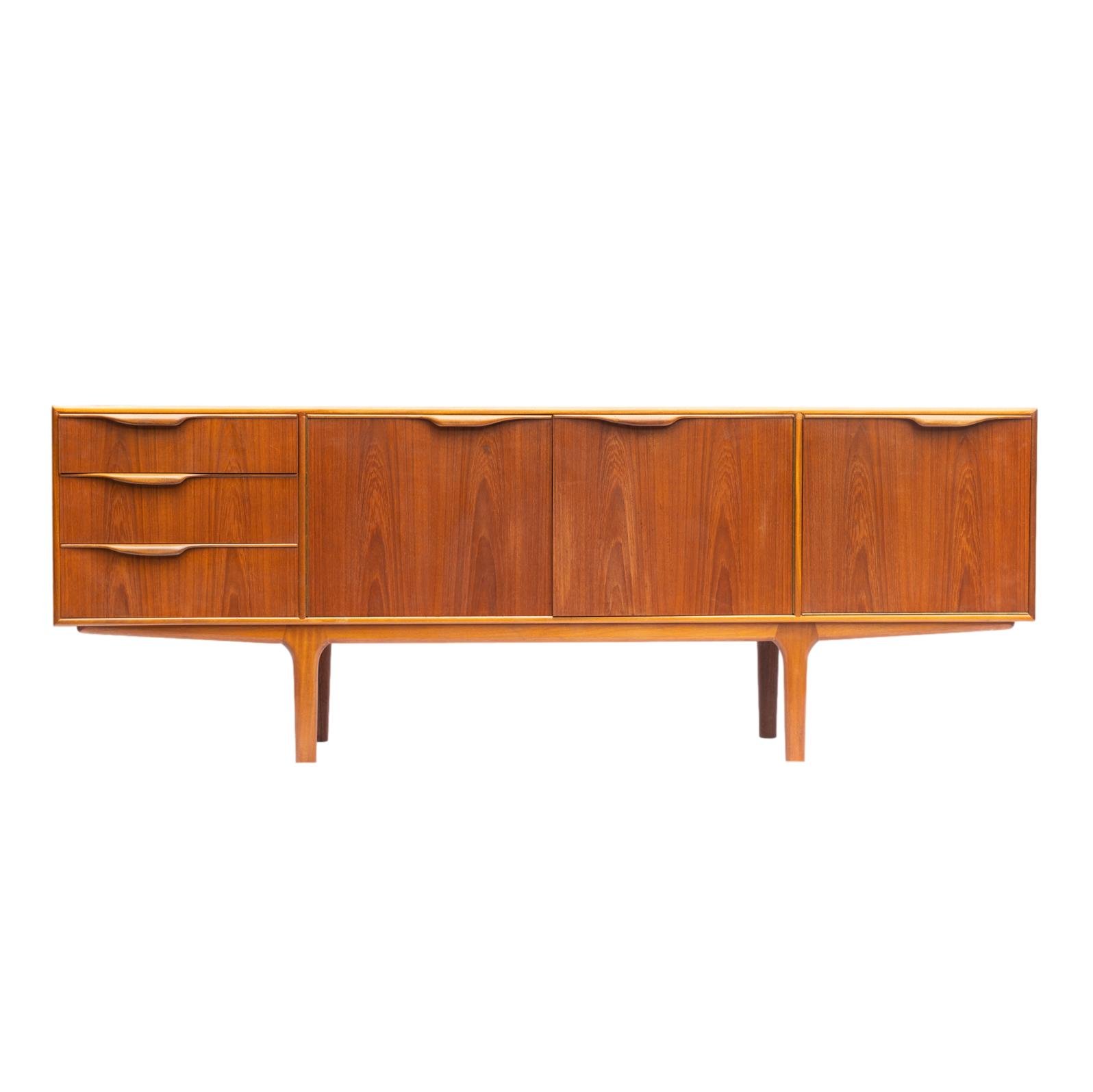 Image 1 of 16
Image 1 of 16

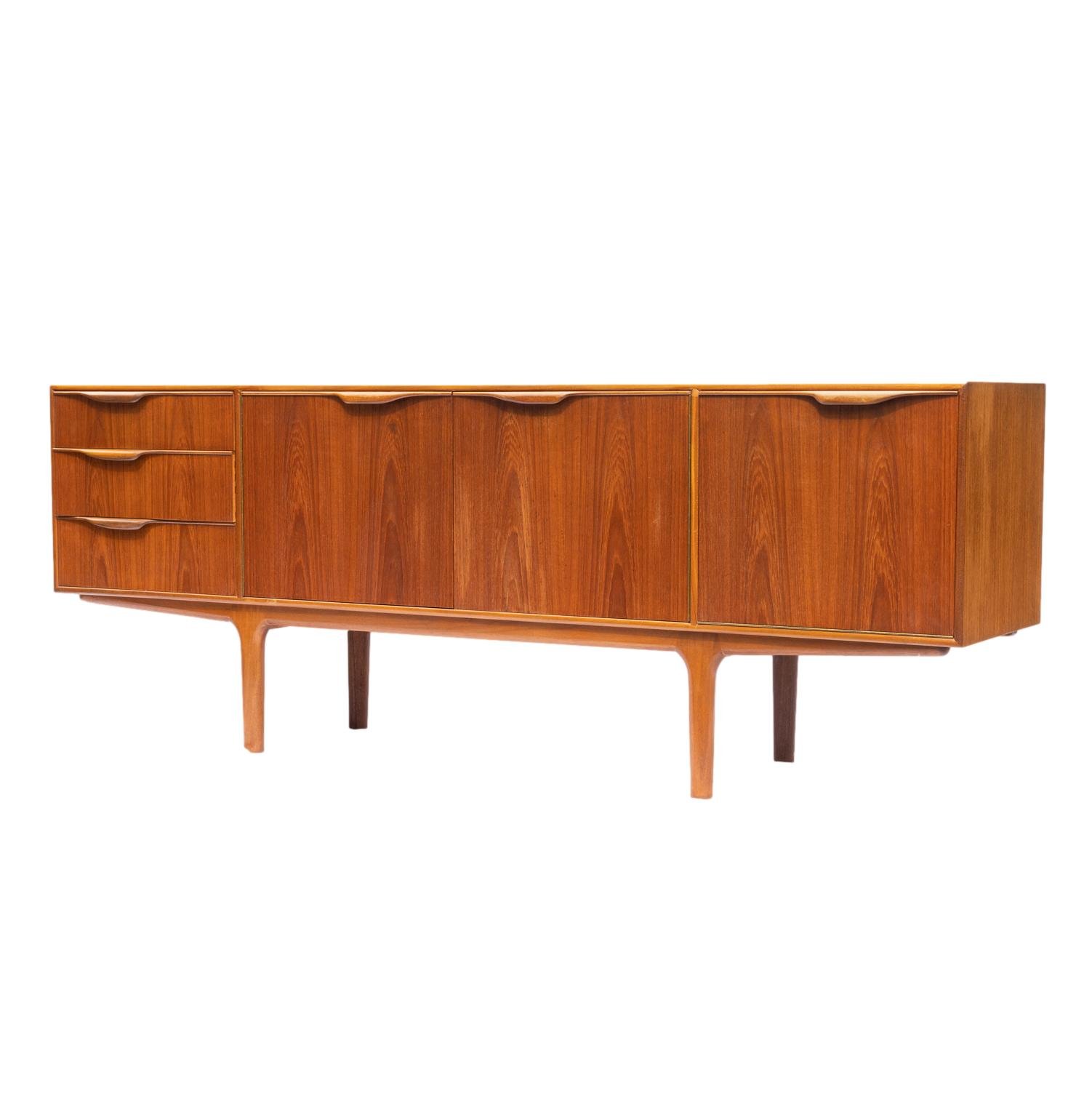 Image 2 of 16
Image 2 of 16

 Image 3 of 16
Image 3 of 16

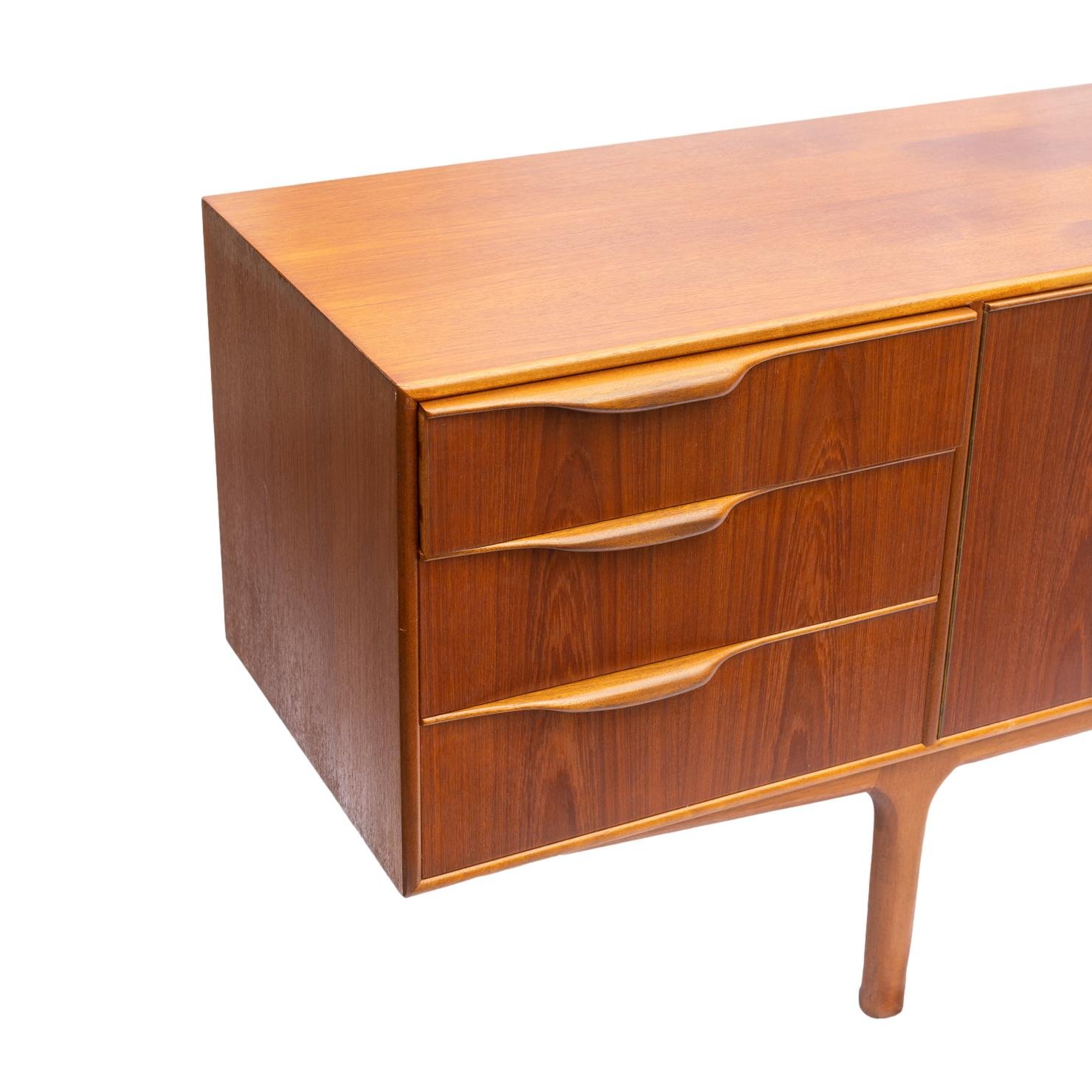 Image 4 of 16
Image 4 of 16

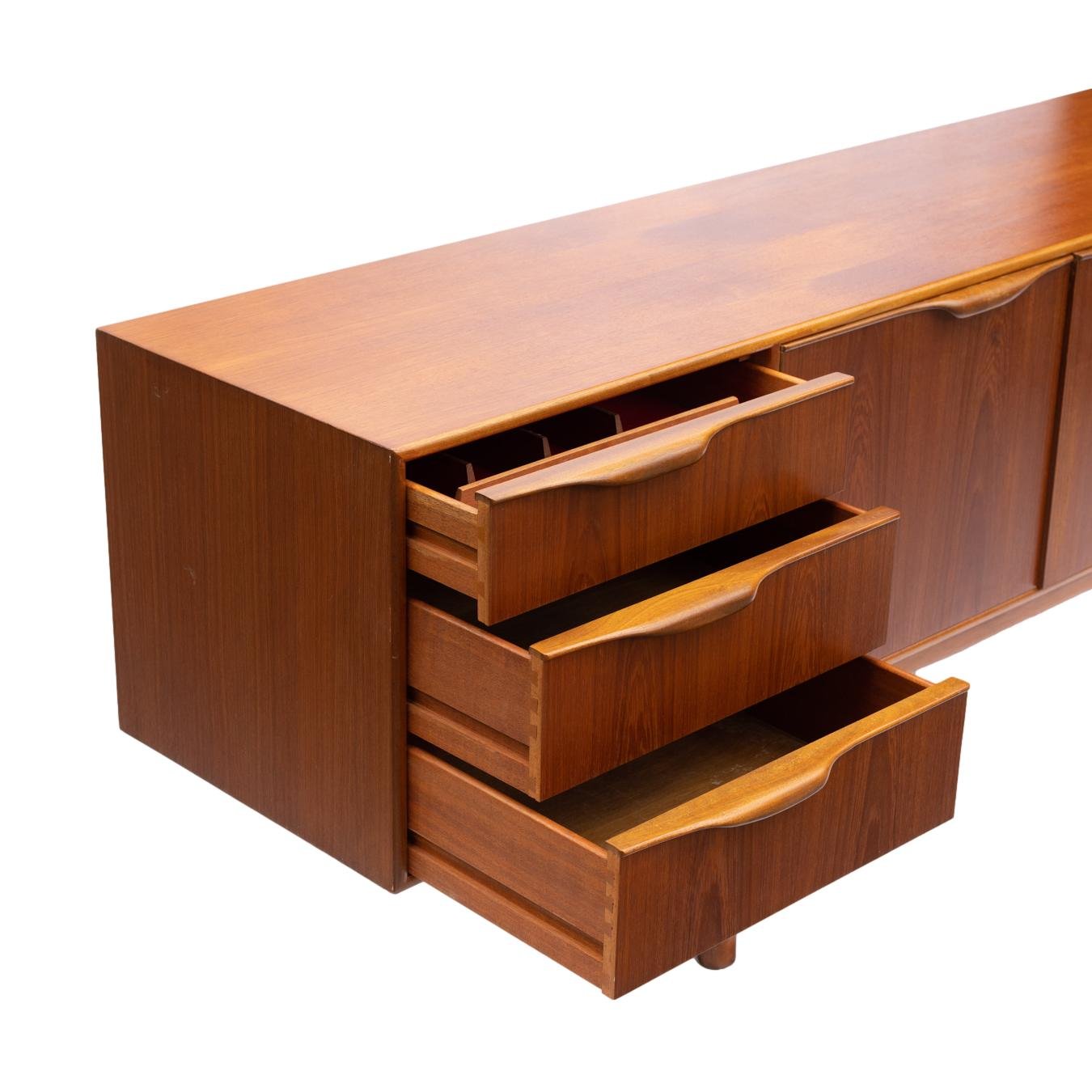 Image 5 of 16
Image 5 of 16

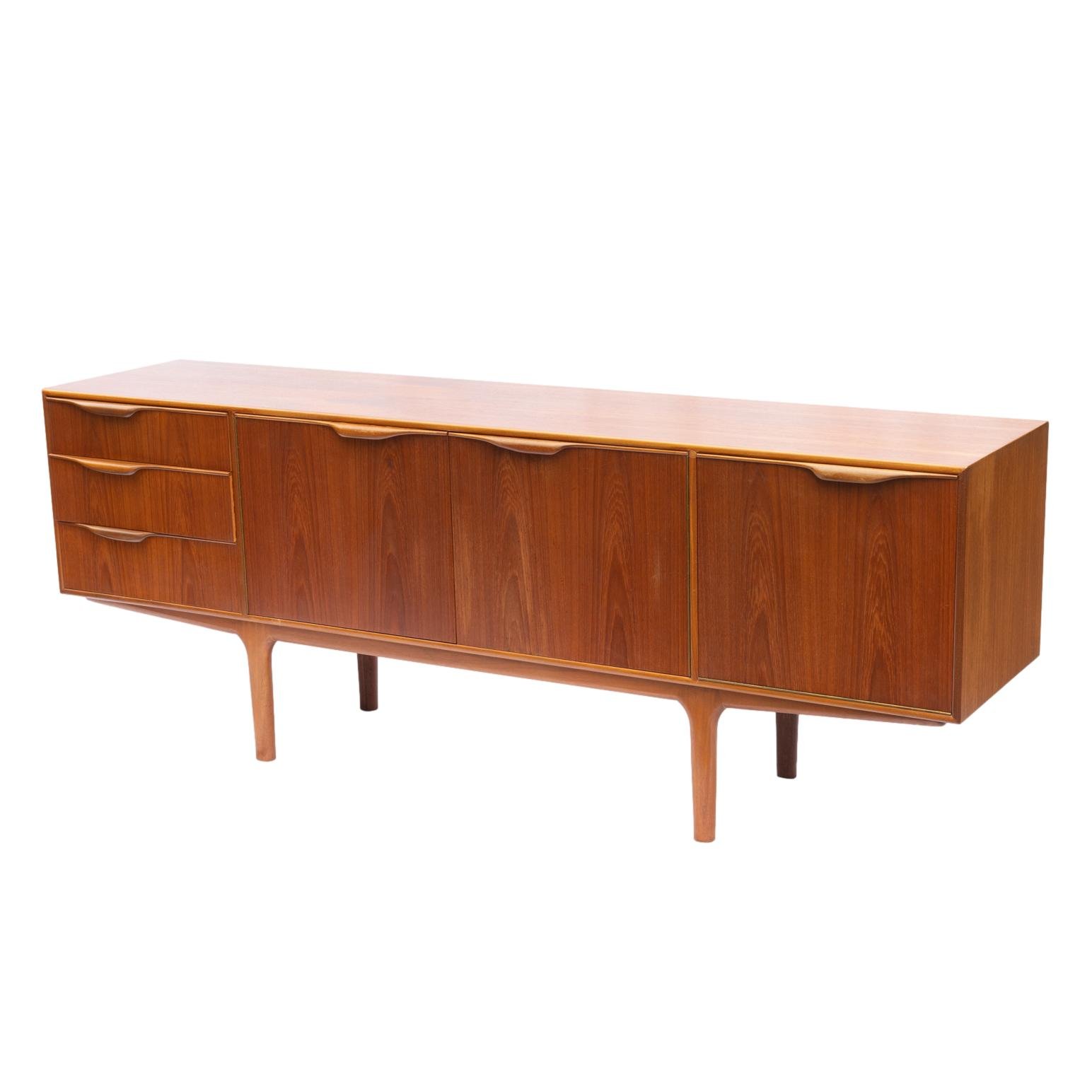 Image 6 of 16
Image 6 of 16

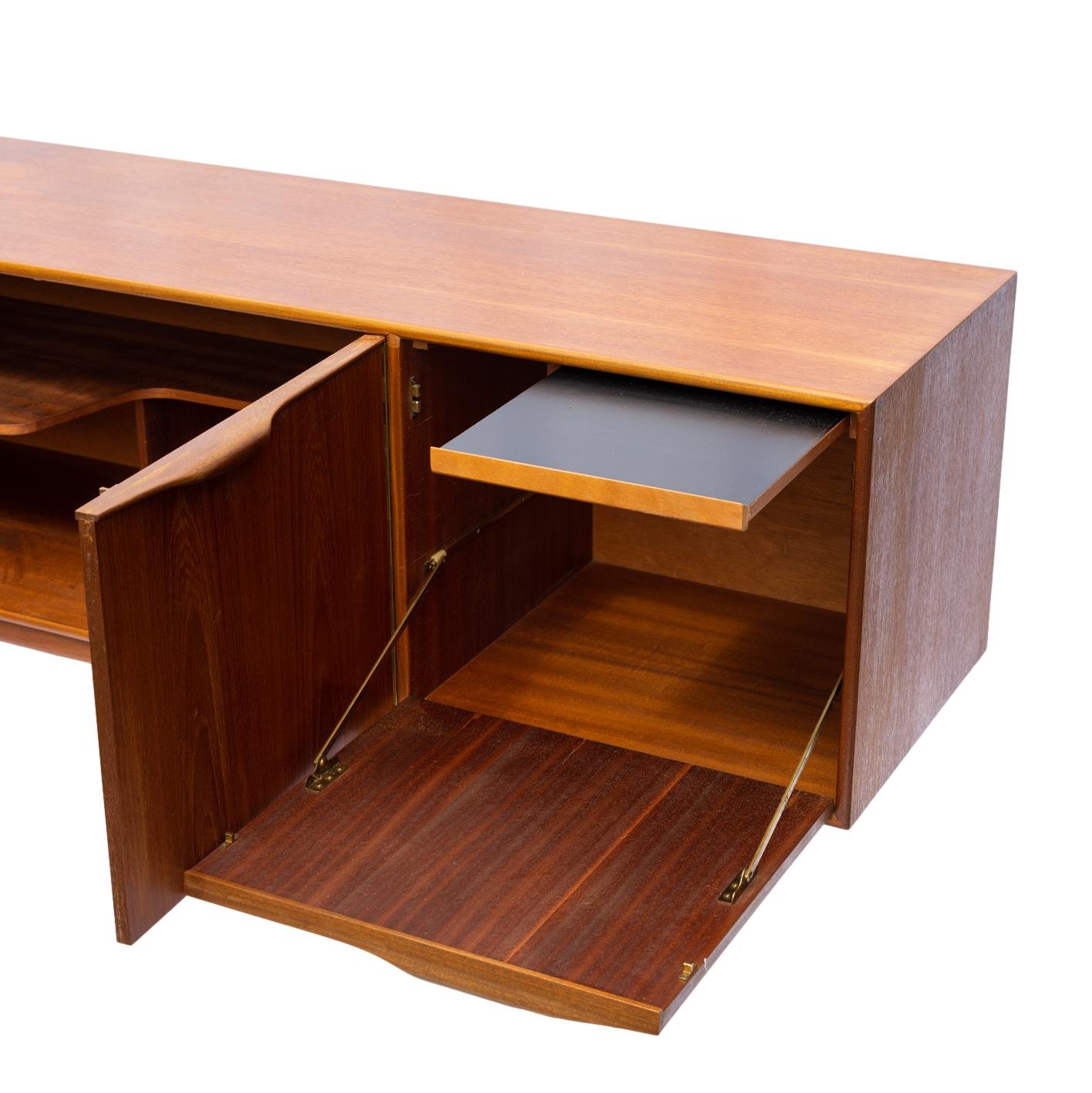 Image 7 of 16
Image 7 of 16

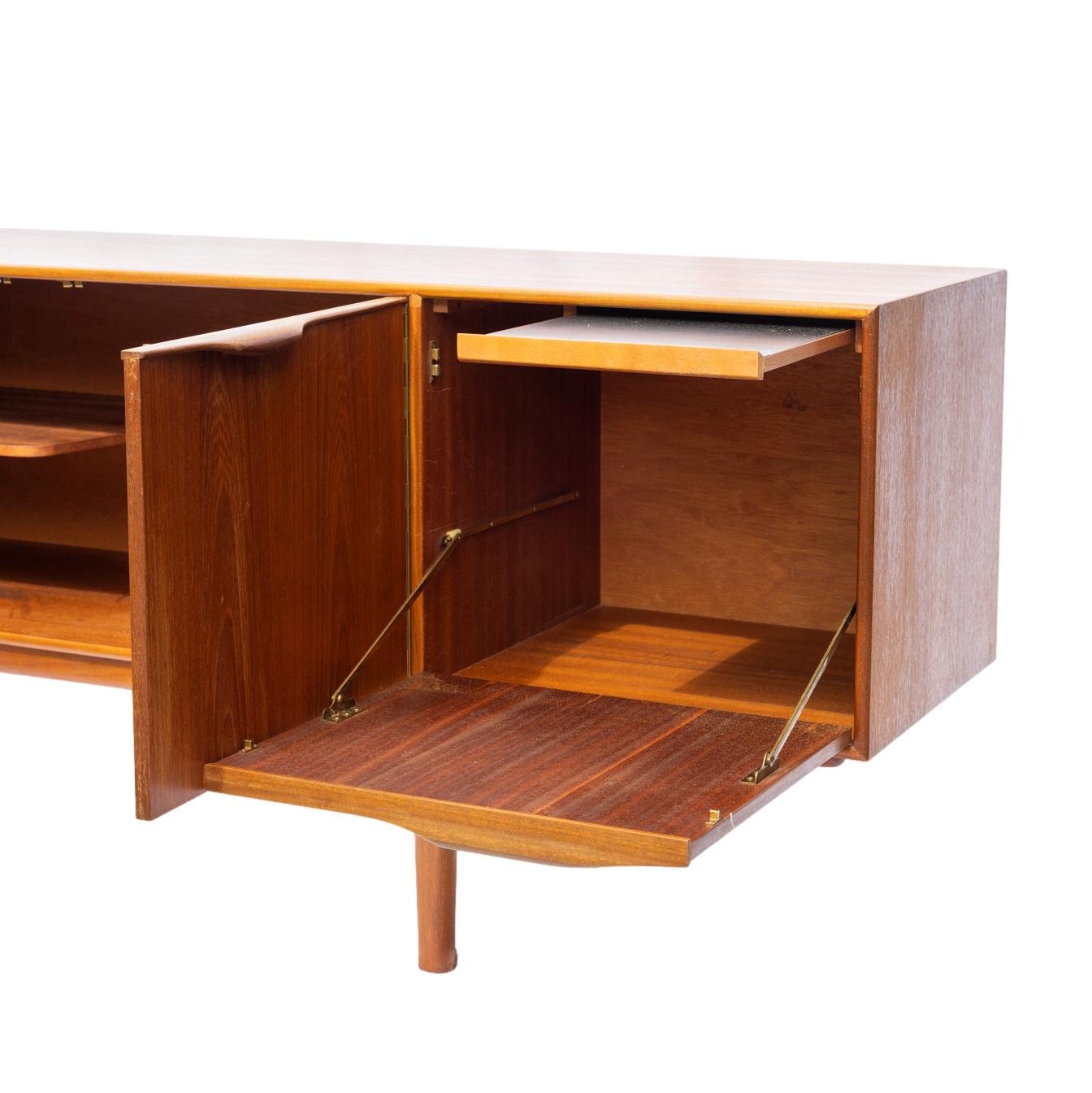 Image 8 of 16
Image 8 of 16

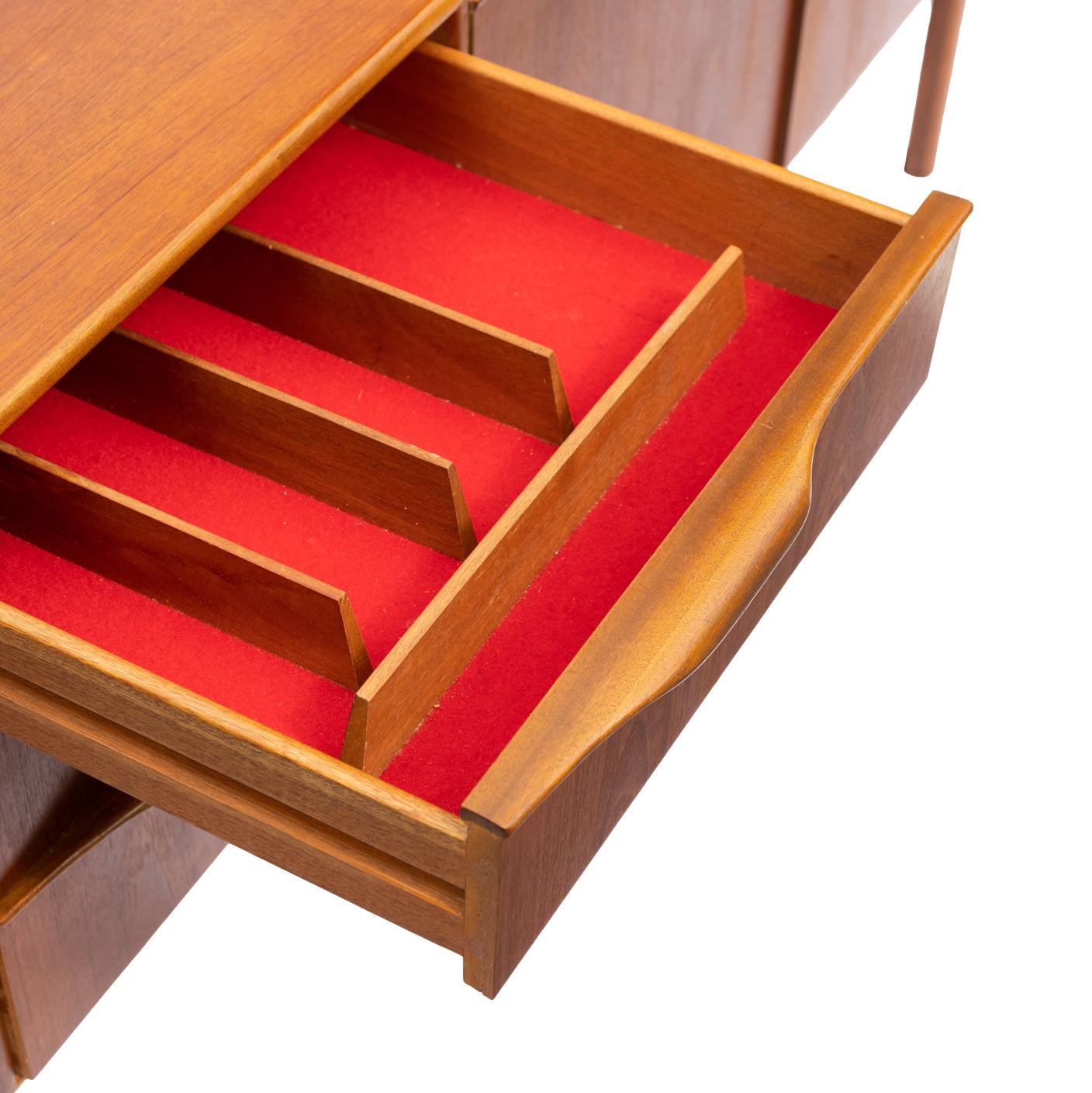 Image 9 of 16
Image 9 of 16

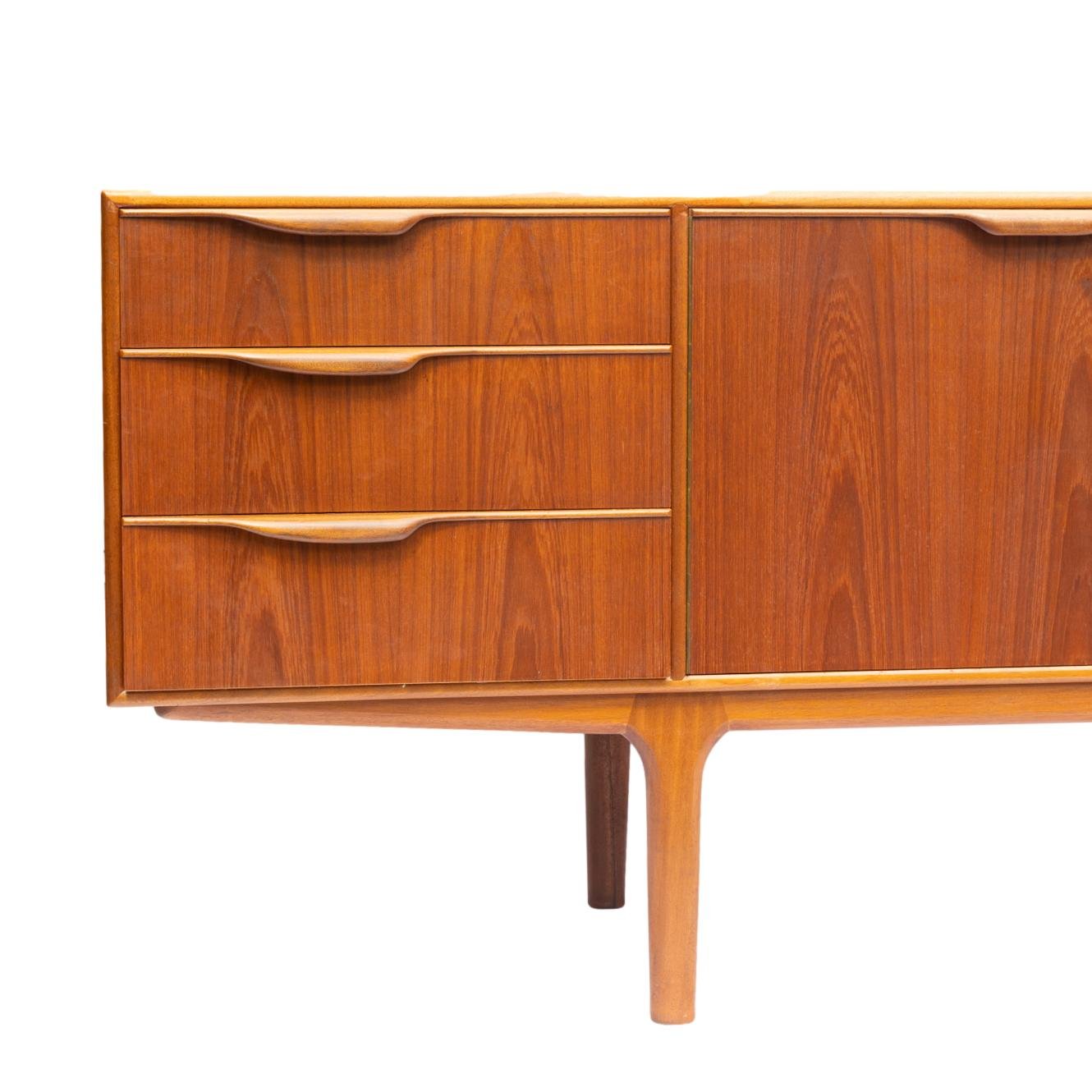 Image 10 of 16
Image 10 of 16

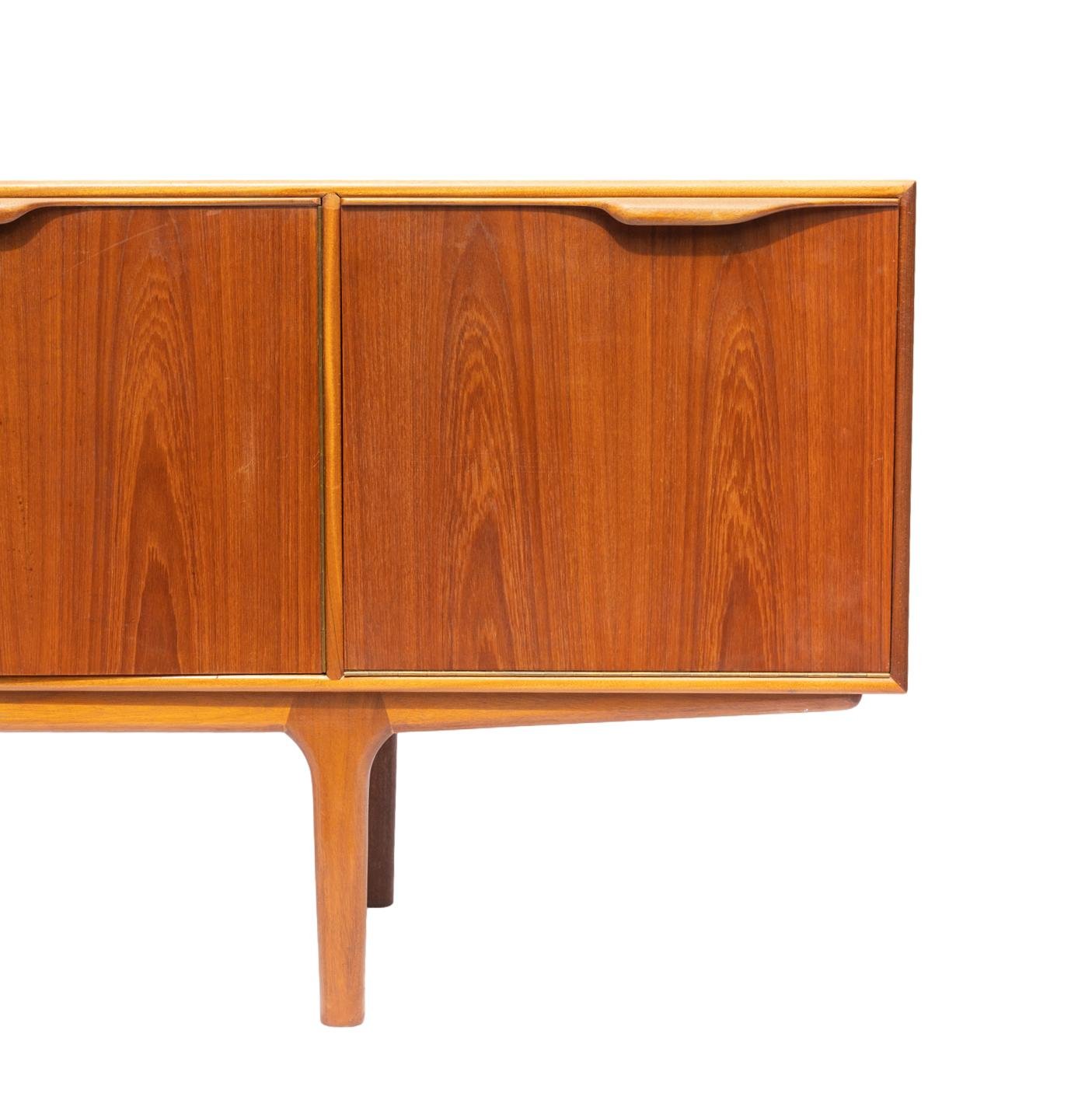 Image 11 of 16
Image 11 of 16

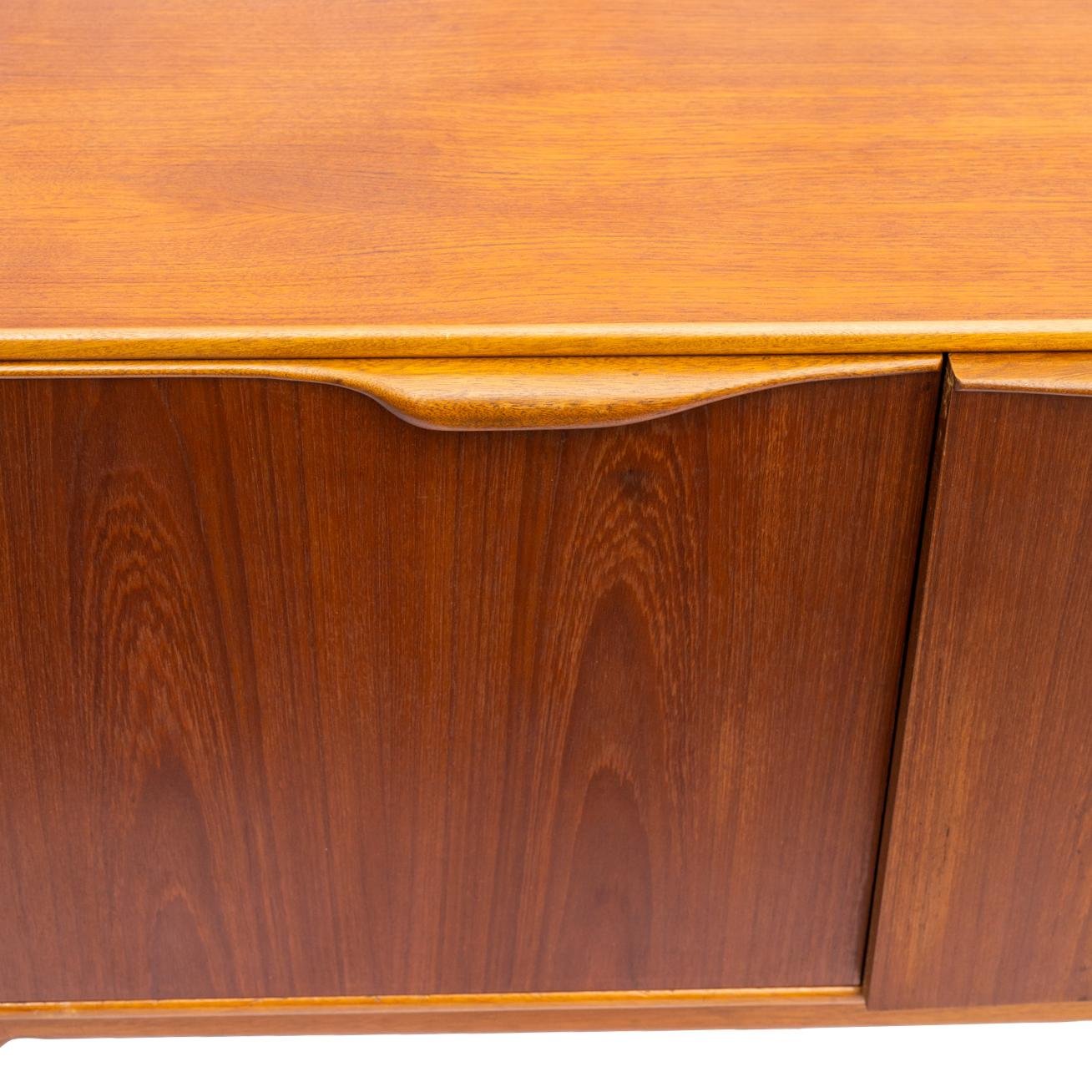 Image 12 of 16
Image 12 of 16

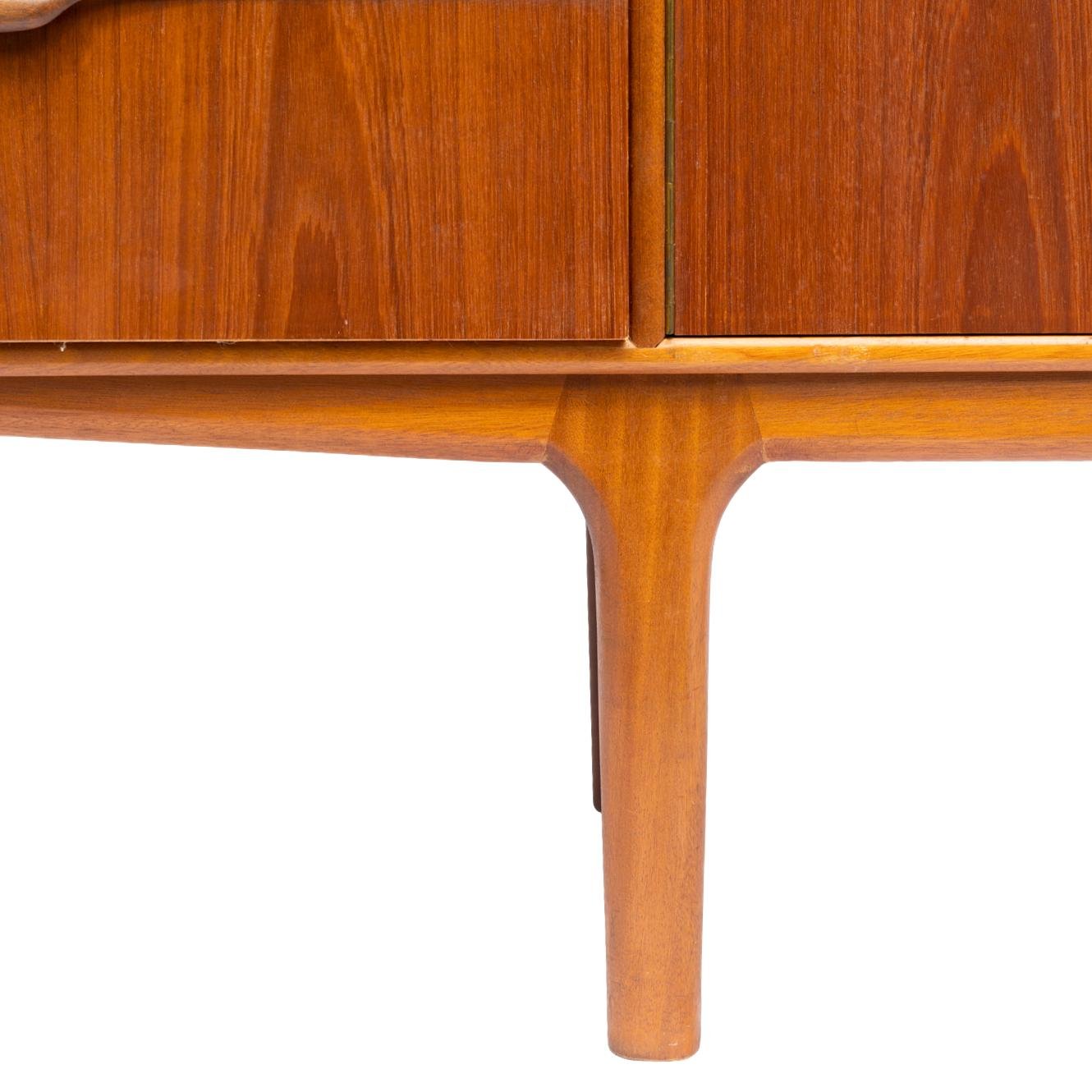 Image 13 of 16
Image 13 of 16

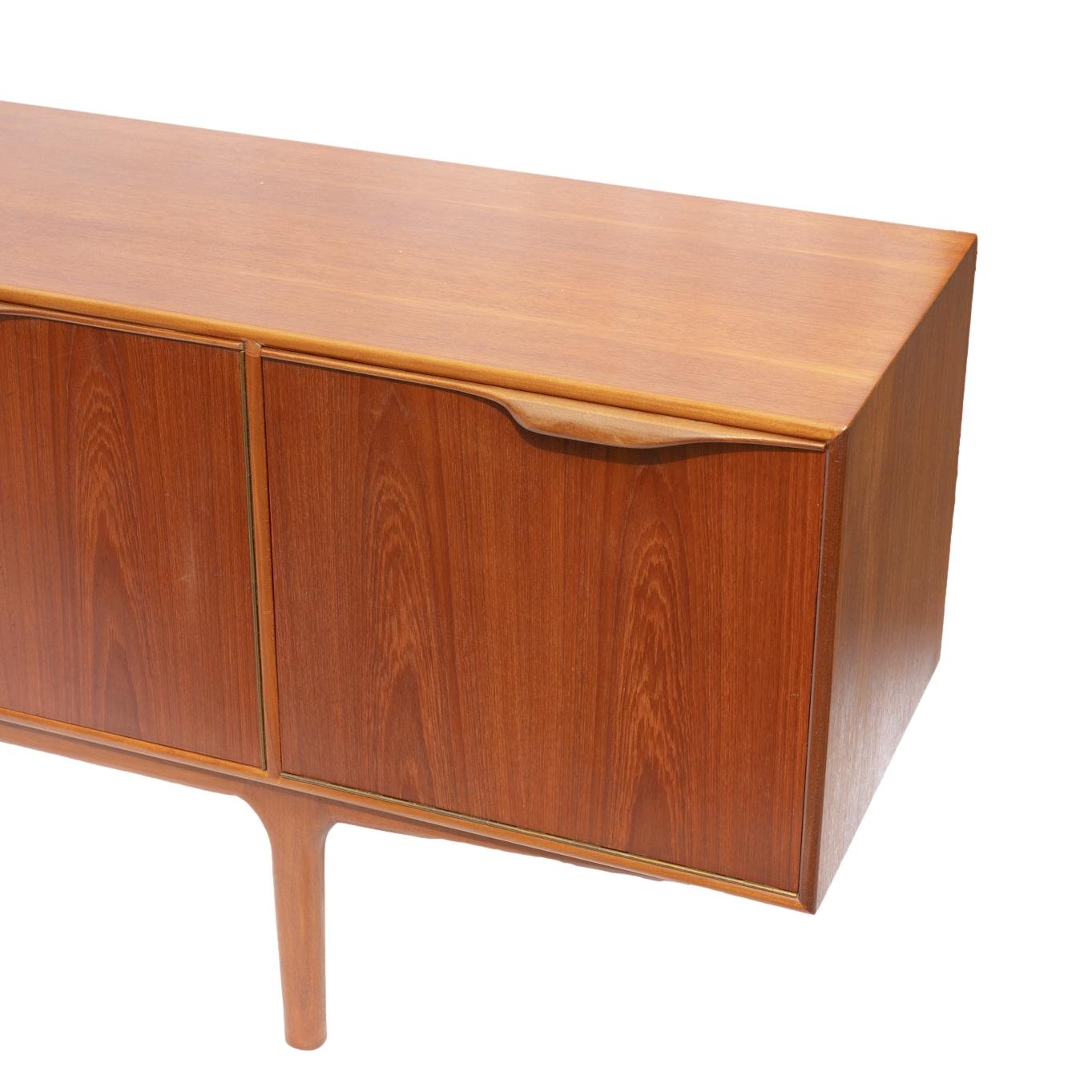 Image 14 of 16
Image 14 of 16

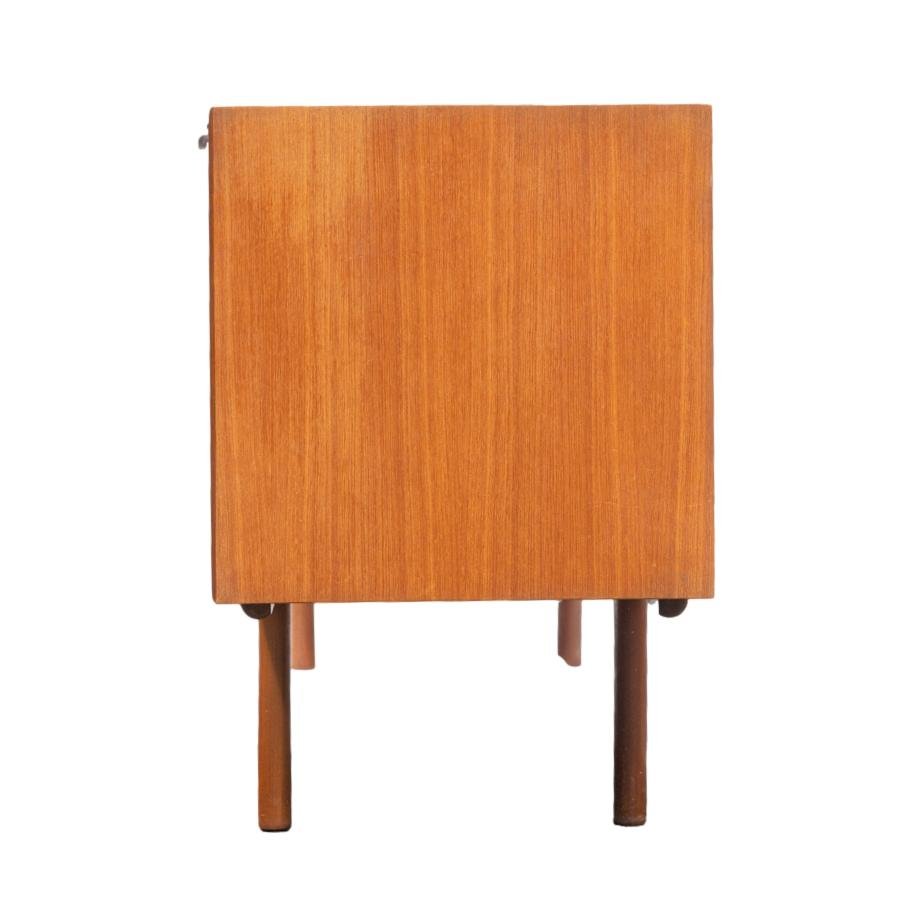 Image 15 of 16
Image 15 of 16

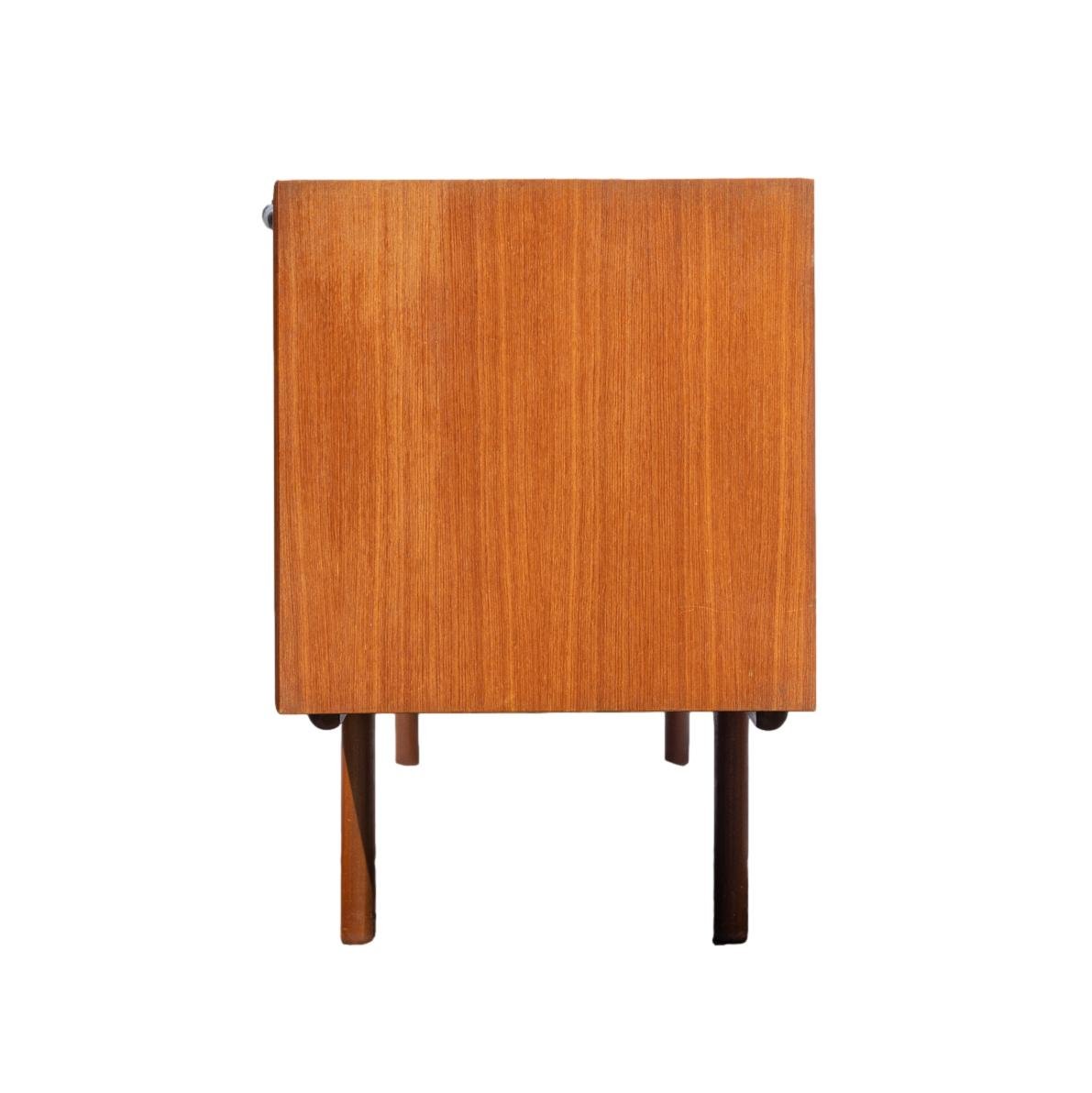 Image 16 of 16
Image 16 of 16

Dunvegan Sideboard, Designed by Tom Robertson for A.H. McIntosh, Signed, ca. 1960
Mid-Century Modern Teak and Oak Sideboard, the streamlined form with two figured teak central cabinets, flanked by a row of three drawers and a bar cabinet with a cocktail slide, with molded and applied sculptural bars forming the pulls, on a Danish Modern base, the top drawer signed with the rectangular metal maker's badge, 'A. H. McINTOSH & CO LTD, KIRKCALDY SCOTLAND,' ca. 1960. Alexander Henry McIntosh started his firm, A.H. McIntosh, in 1869 and quickly became known for its high quality and fresh designs, gaining an international reputation primarily through participation in international trade fairs and exhibitions, the first at The Exposition Universelle in Paris in 1878 and the Sydney Exhibition in 1879. In the late 1940s through the 1970s the firm turned its focus on high-quality Danish-influenced modern furniture. From 1948 until 1983, Tom Robertson worked as head designer for the firm. Each of his designs for McIntosh is named after a town in Scotland; in this case, Dunvegan, after the village in Scotland on the Isle of Skye. The 'Dunvegan' sideboard was Robertson's most successful design.
Mid-Century Modern Teak and Oak Sideboard, the streamlined form with two figured teak central cabinets, flanked by a row of three drawers and a bar cabinet with a cocktail slide, with molded and applied sculptural bars forming the pulls, on a Danish Modern base, the top drawer signed with the rectangular metal maker's badge, 'A. H. McINTOSH & CO LTD, KIRKCALDY SCOTLAND,' ca. 1960. Alexander Henry McIntosh started his firm, A.H. McIntosh, in 1869 and quickly became known for its high quality and fresh designs, gaining an international reputation primarily through participation in international trade fairs and exhibitions, the first at The Exposition Universelle in Paris in 1878 and the Sydney Exhibition in 1879. In the late 1940s through the 1970s the firm turned its focus on high-quality Danish-influenced modern furniture. From 1948 until 1983, Tom Robertson worked as head designer for the firm. Each of his designs for McIntosh is named after a town in Scotland; in this case, Dunvegan, after the village in Scotland on the Isle of Skye. The 'Dunvegan' sideboard was Robertson's most successful design.
Mid-Century Modern Teak and Oak Sideboard, the streamlined form with two figured teak central cabinets, flanked by a row of three drawers and a bar cabinet with a cocktail slide, with molded and applied sculptural bars forming the pulls, on a Danish Modern base, the top drawer signed with the rectangular metal maker's badge, 'A. H. McINTOSH & CO LTD, KIRKCALDY SCOTLAND,' ca. 1960. Alexander Henry McIntosh started his firm, A.H. McIntosh, in 1869 and quickly became known for its high quality and fresh designs, gaining an international reputation primarily through participation in international trade fairs and exhibitions, the first at The Exposition Universelle in Paris in 1878 and the Sydney Exhibition in 1879. In the late 1940s through the 1970s the firm turned its focus on high-quality Danish-influenced modern furniture. From 1948 until 1983, Tom Robertson worked as head designer for the firm. Each of his designs for McIntosh is named after a town in Scotland; in this case, Dunvegan, after the village in Scotland on the Isle of Skye. The 'Dunvegan' sideboard was Robertson's most successful design.



